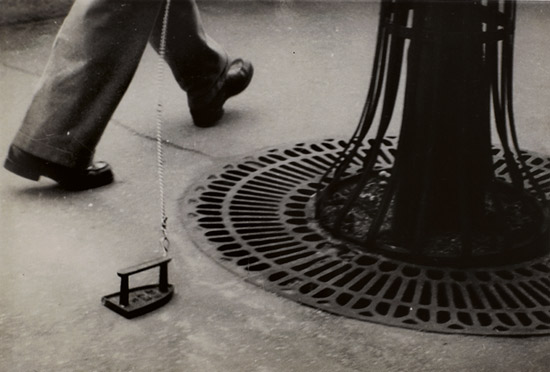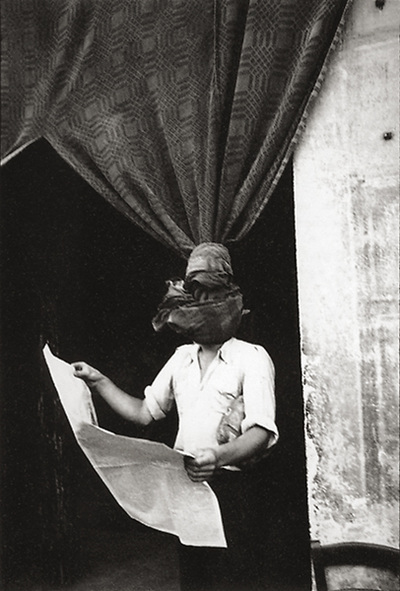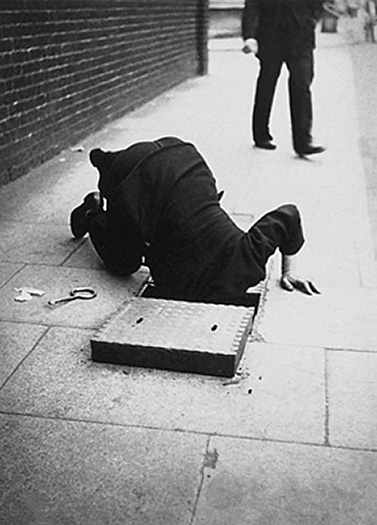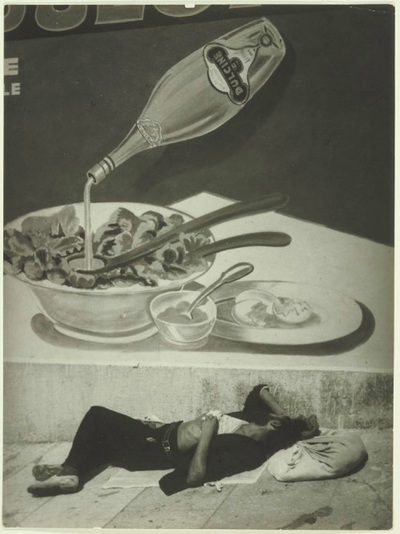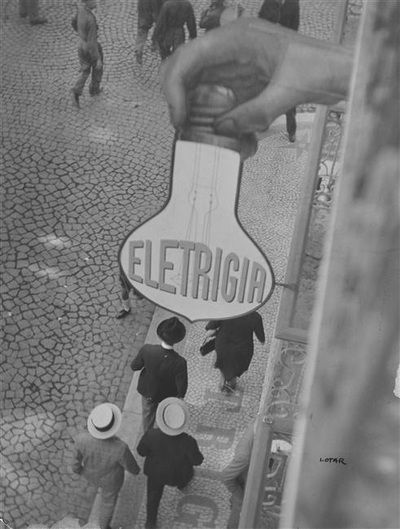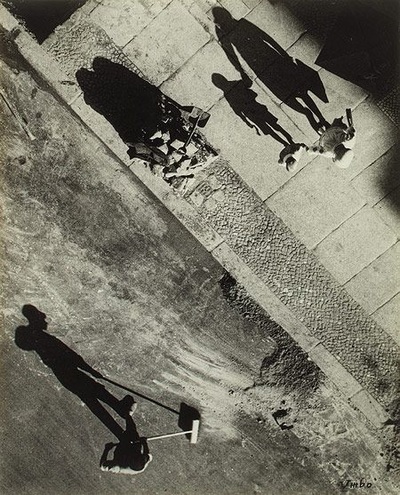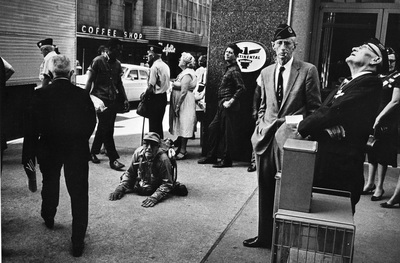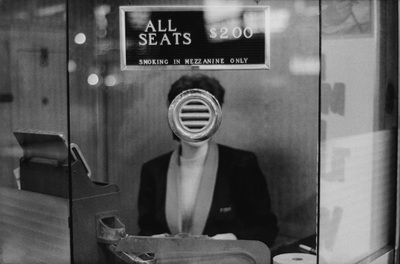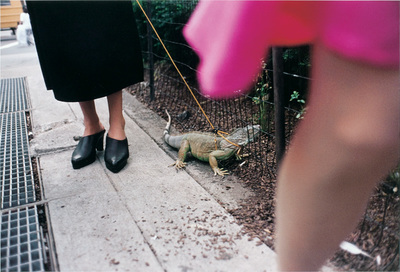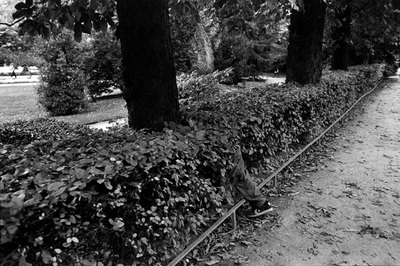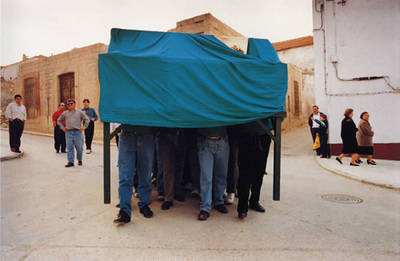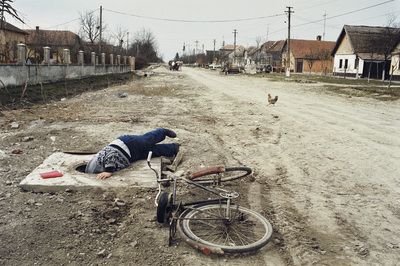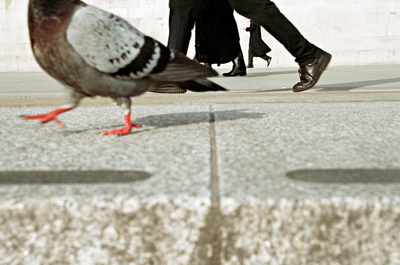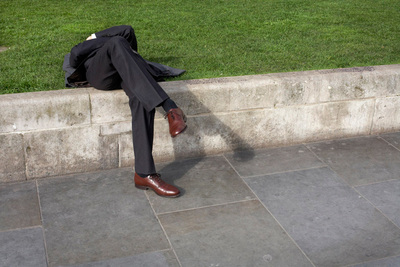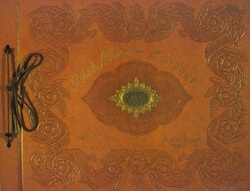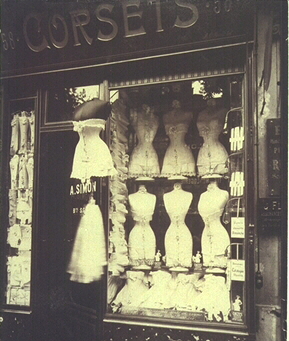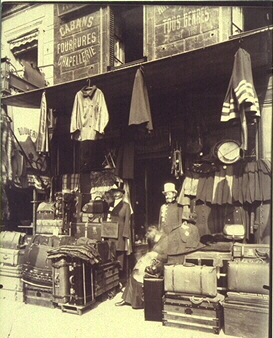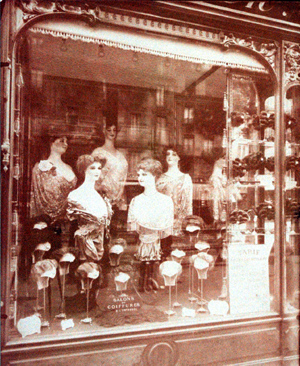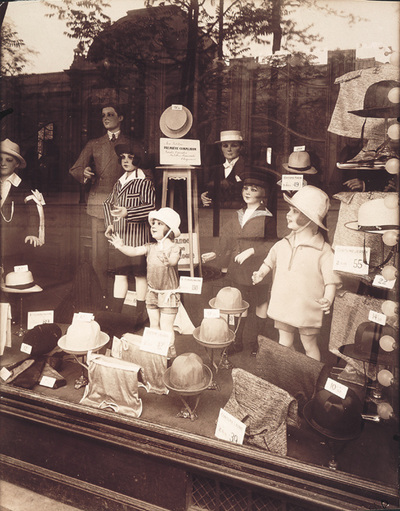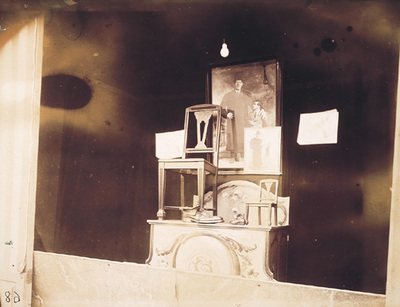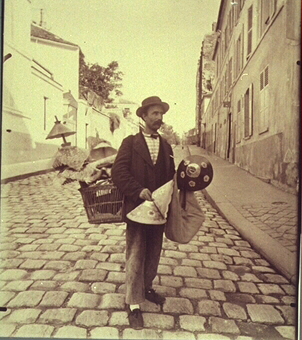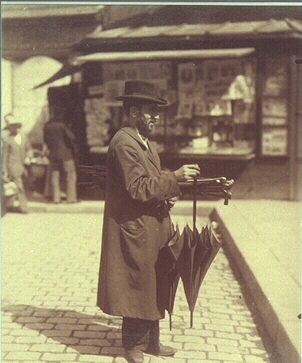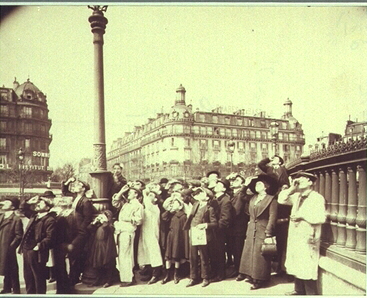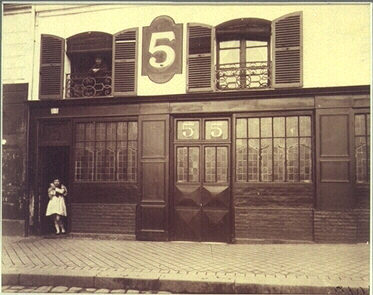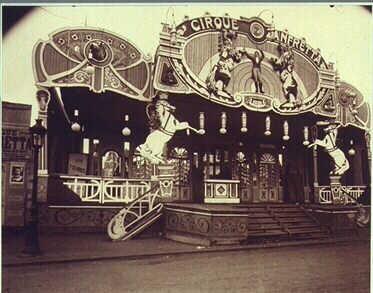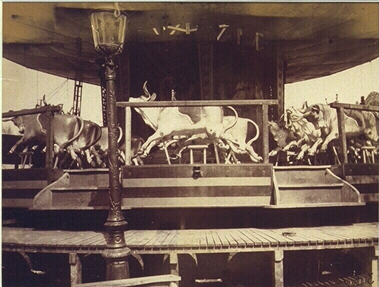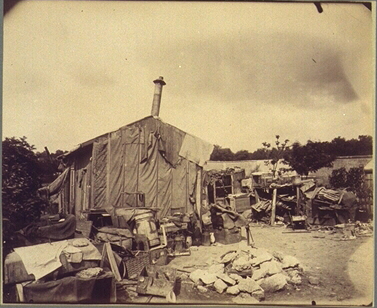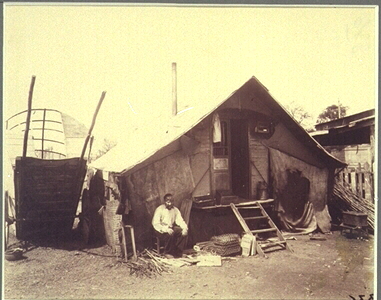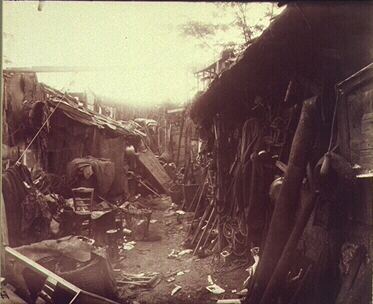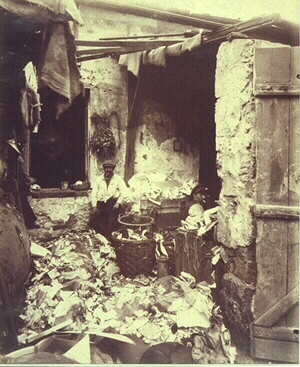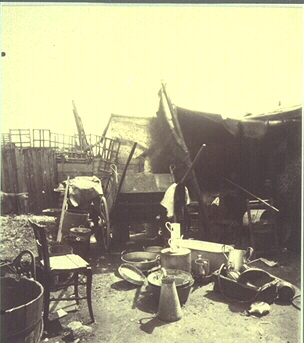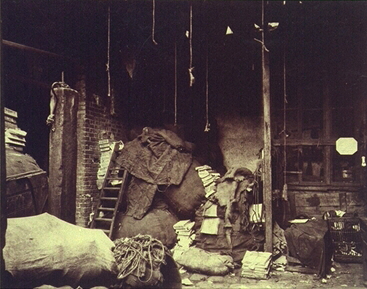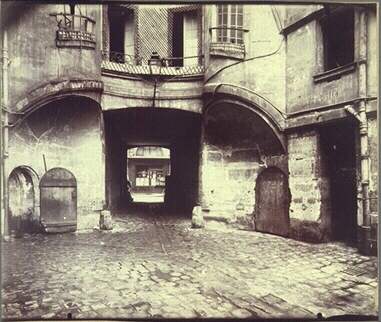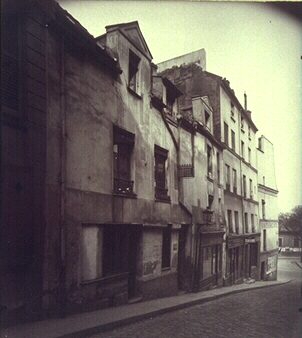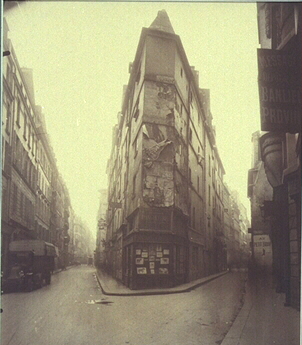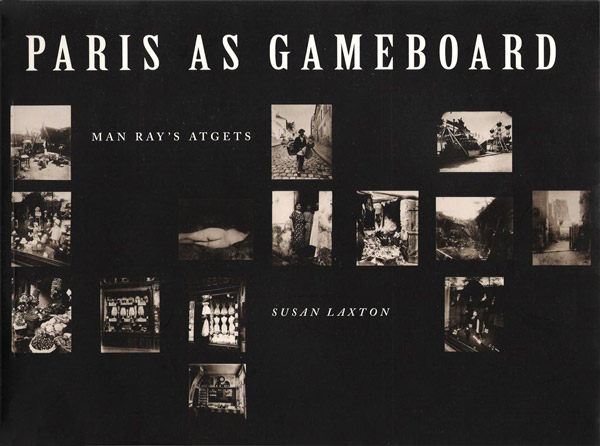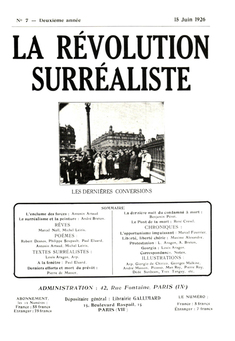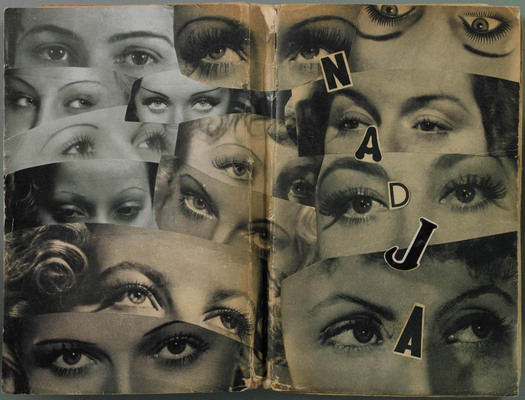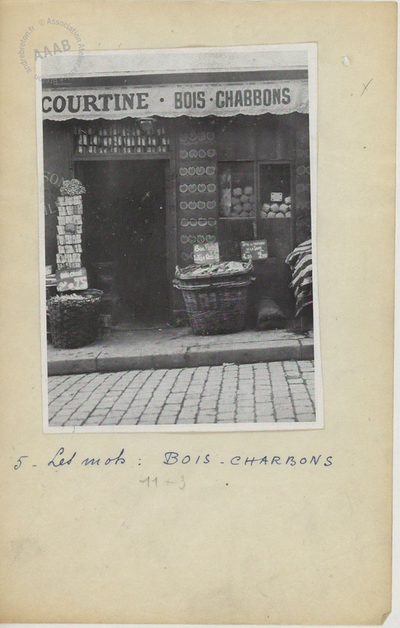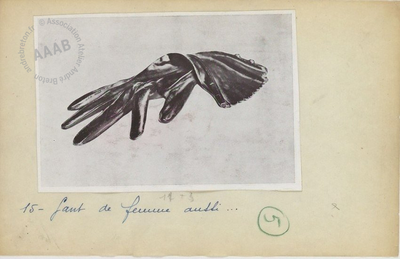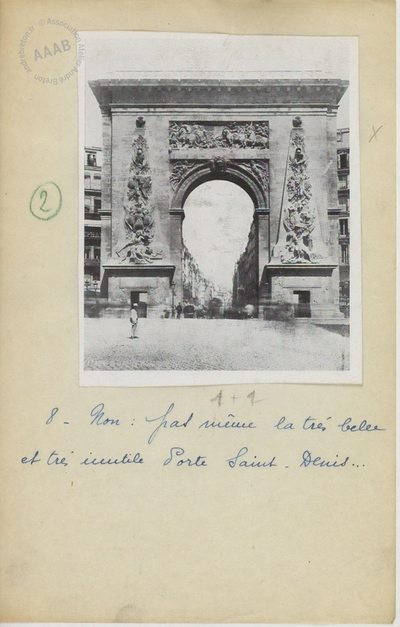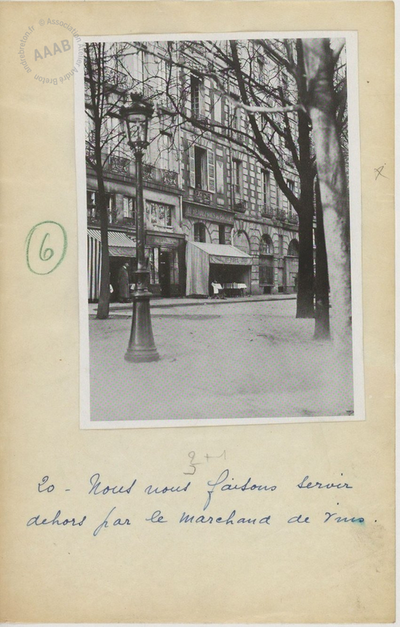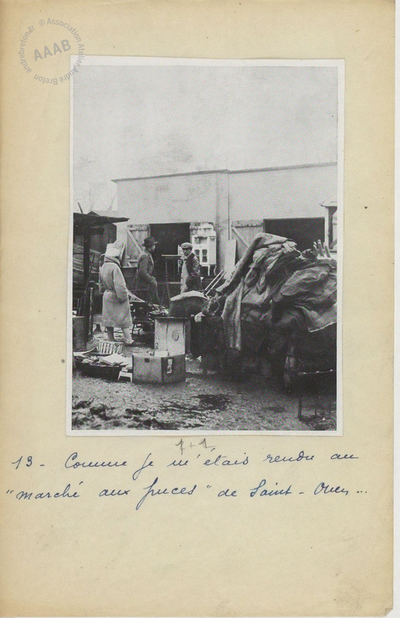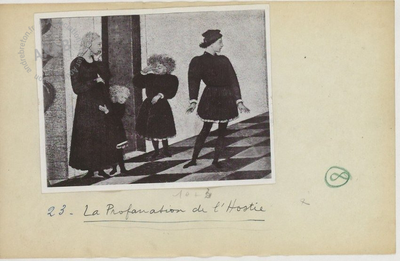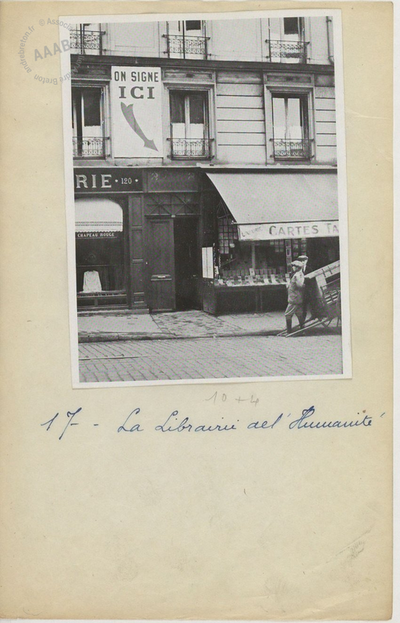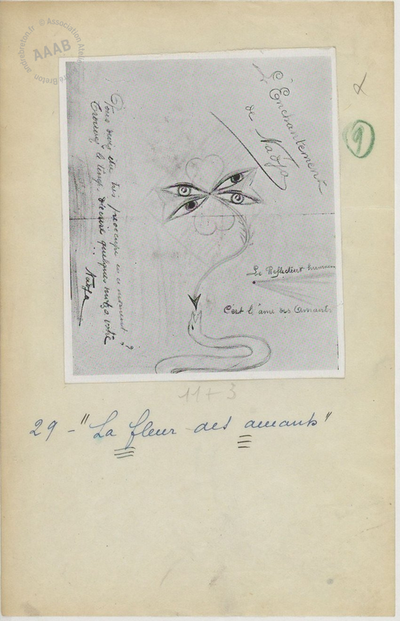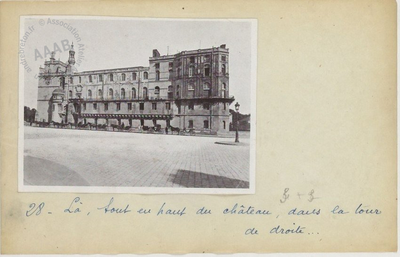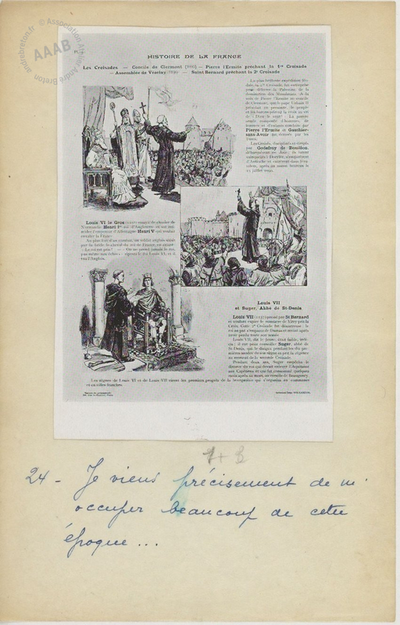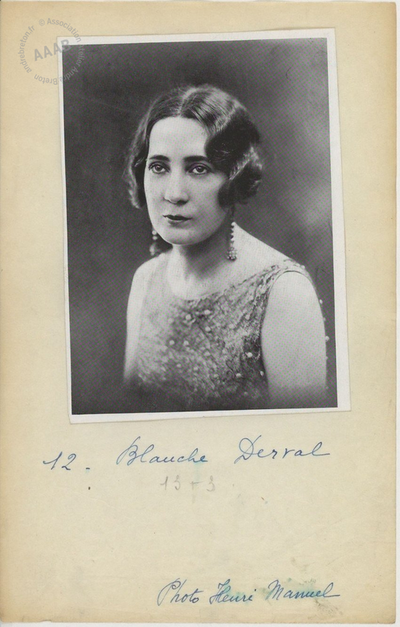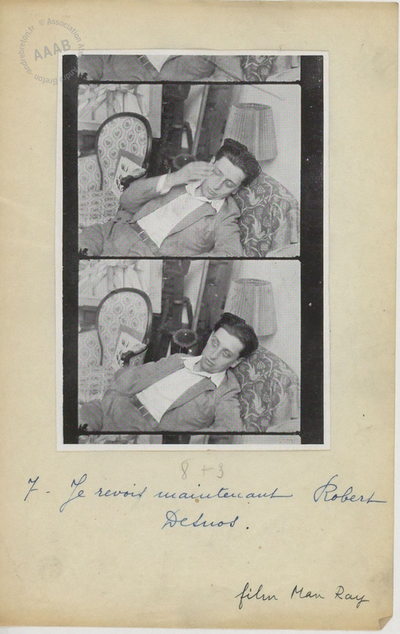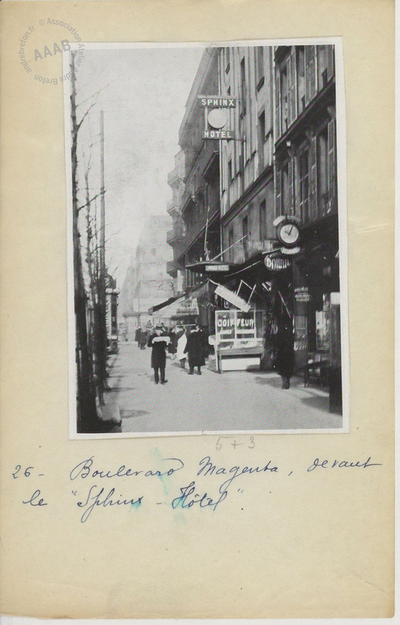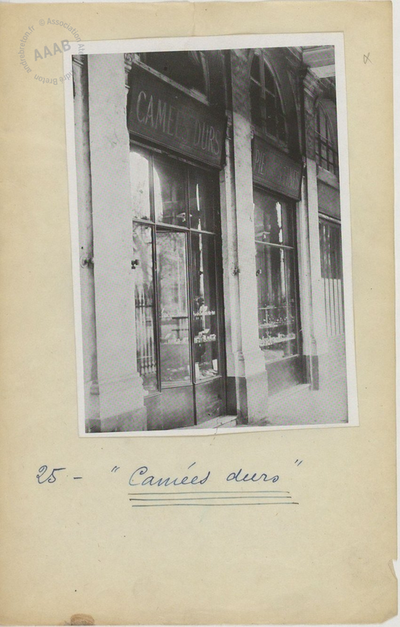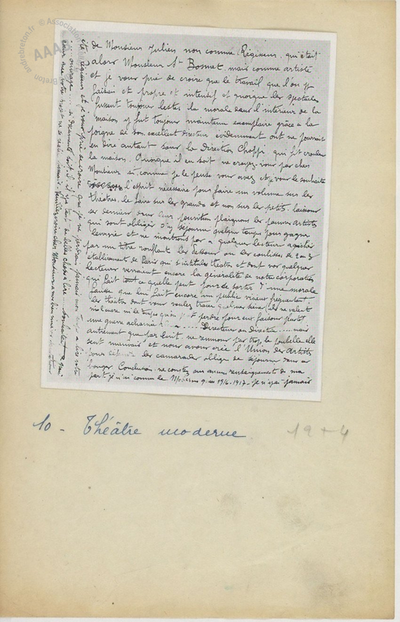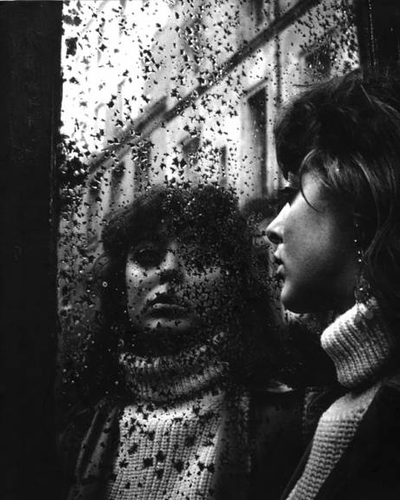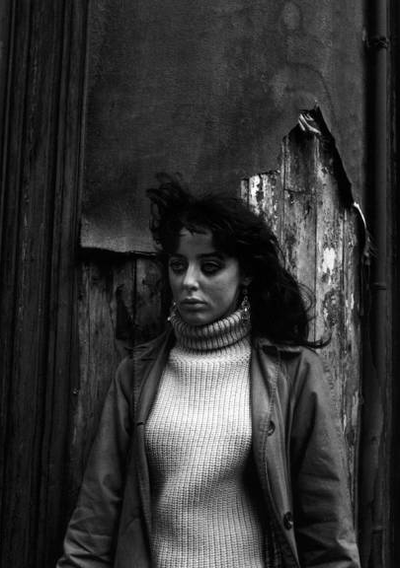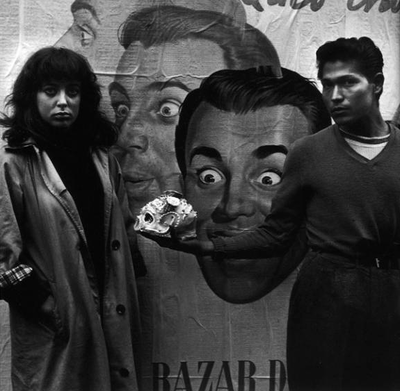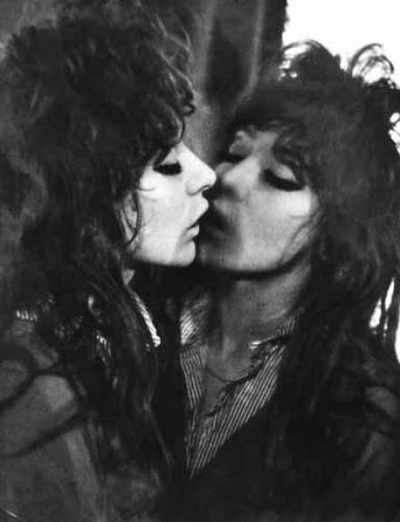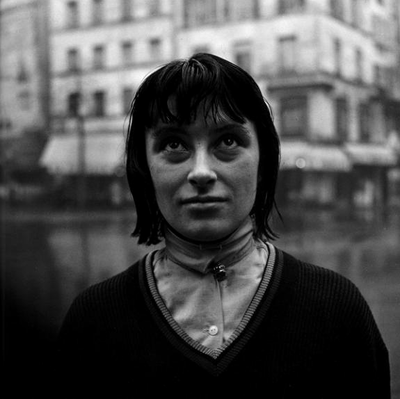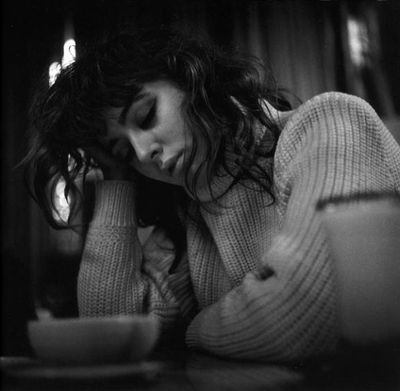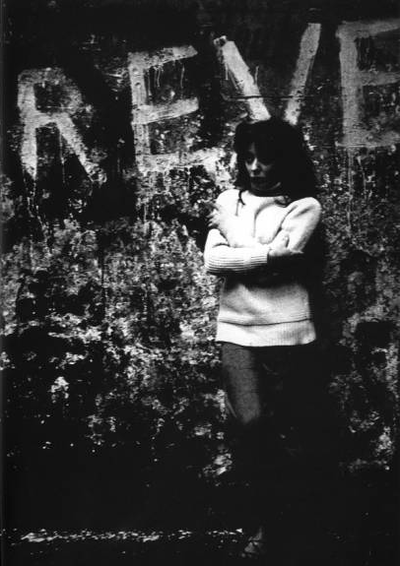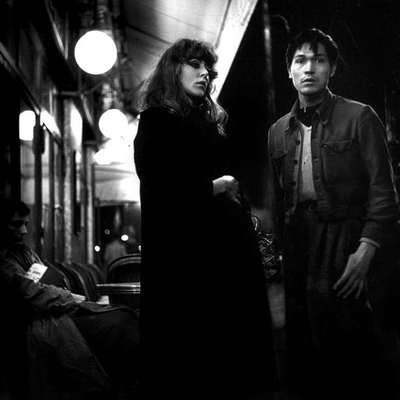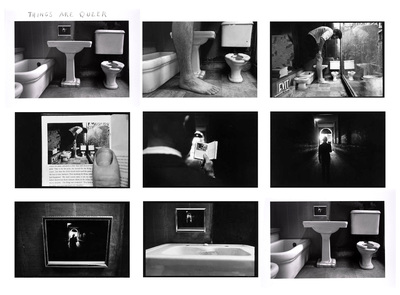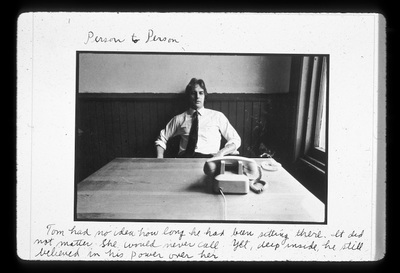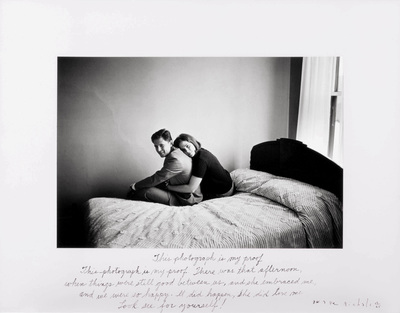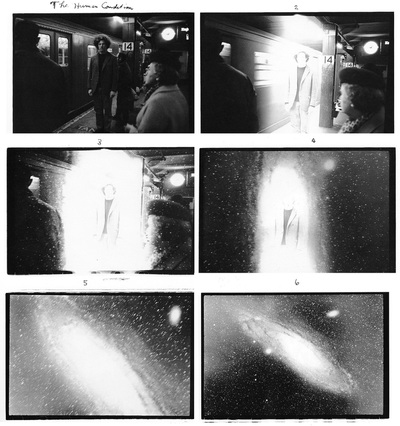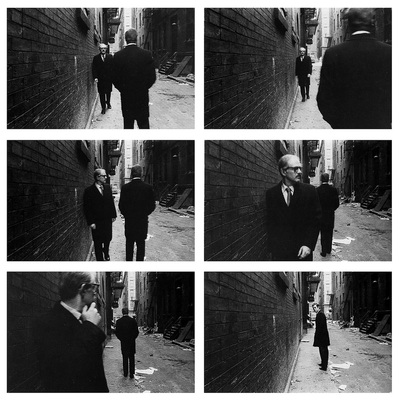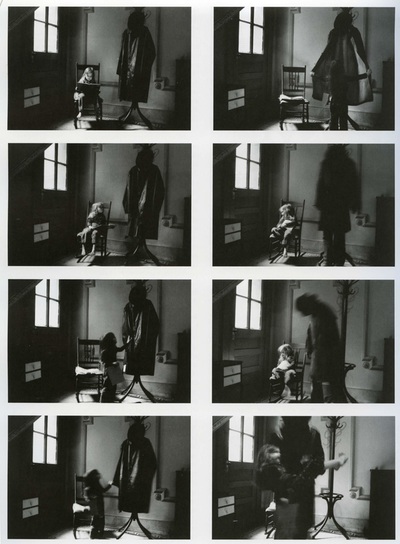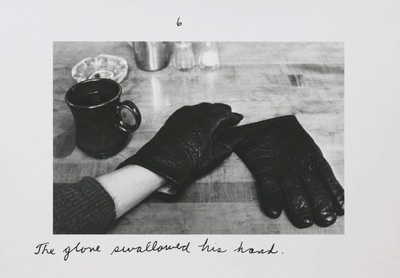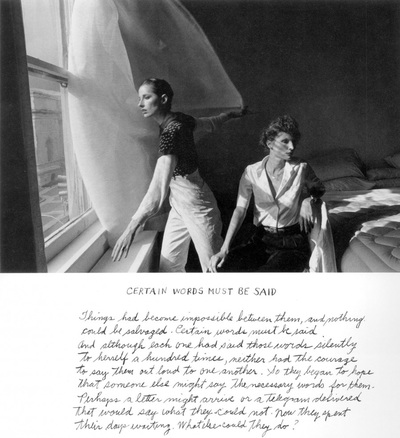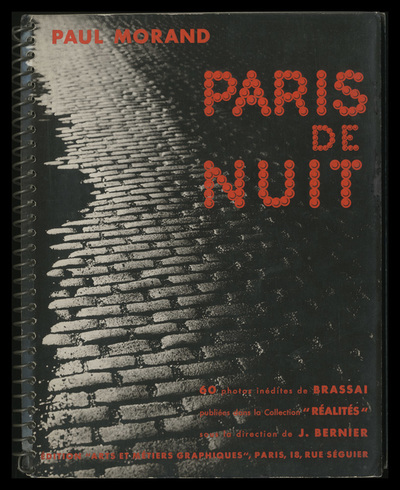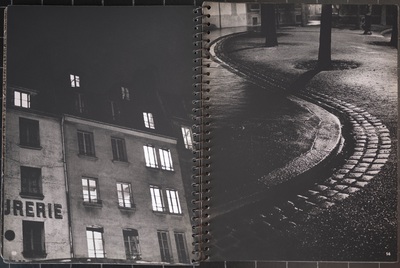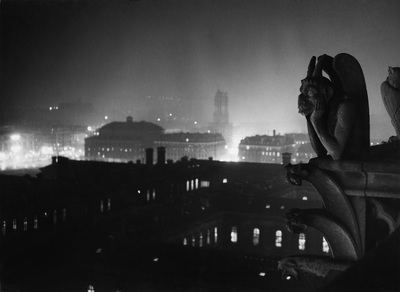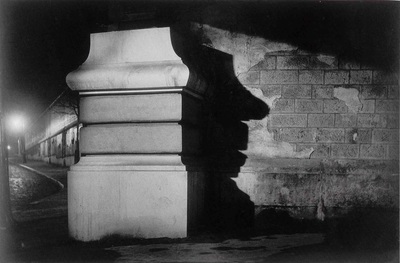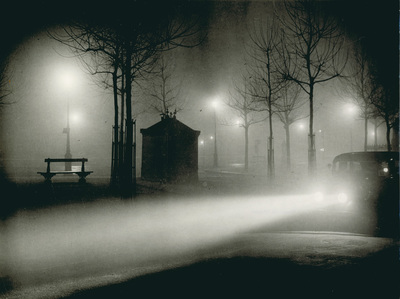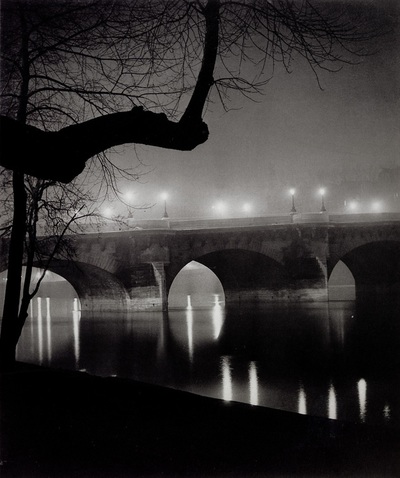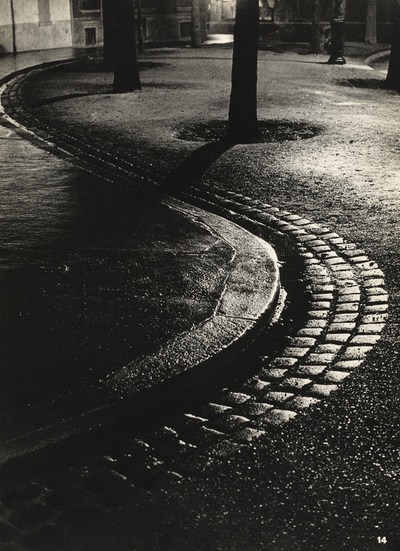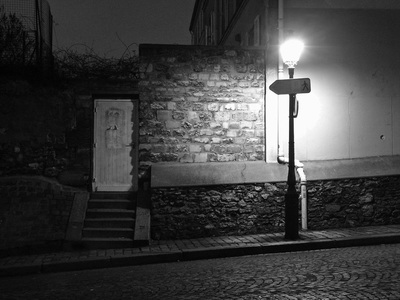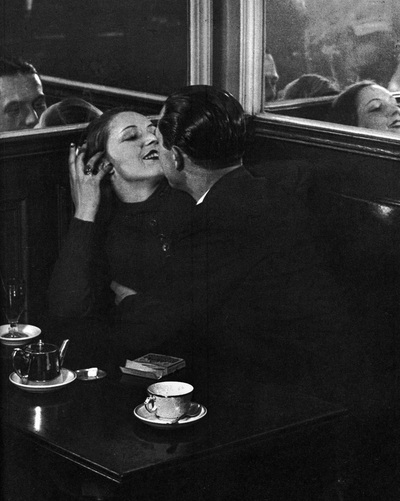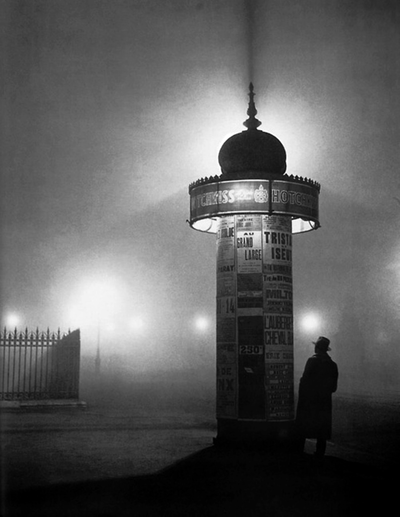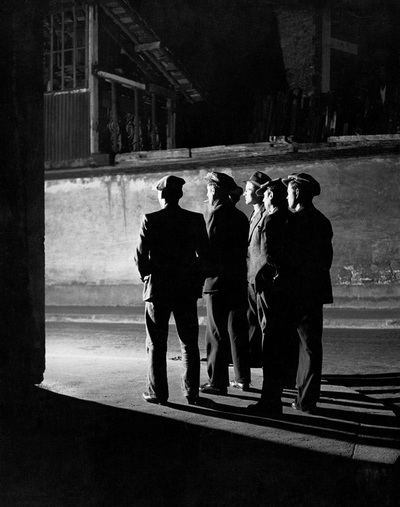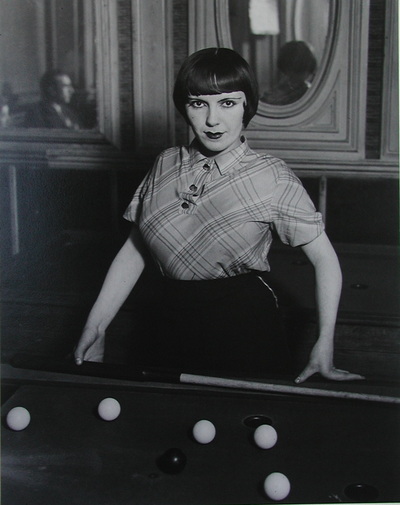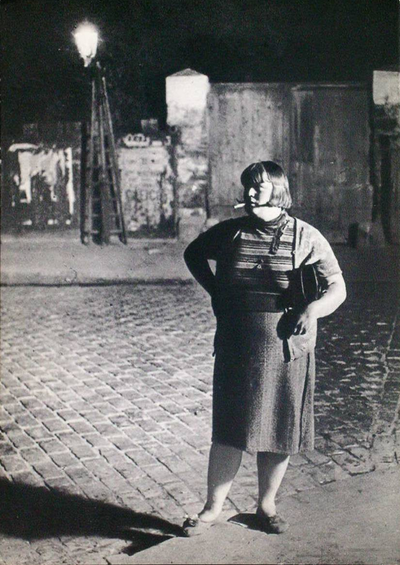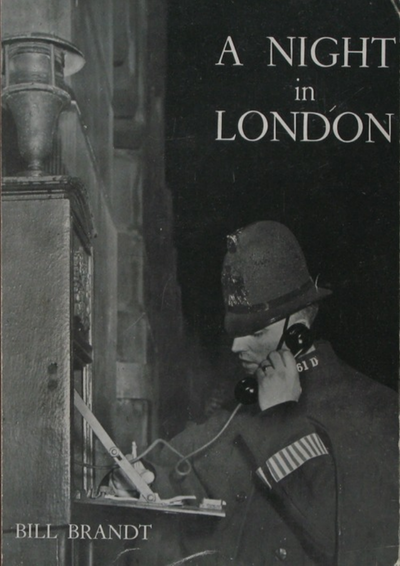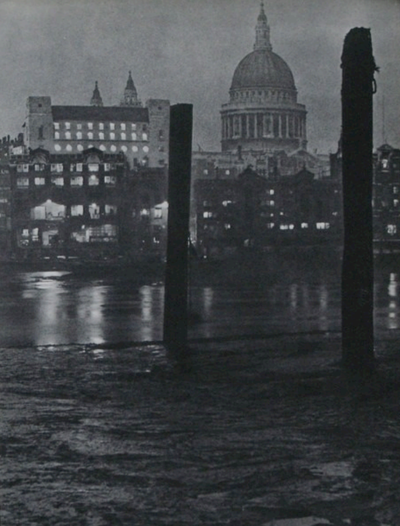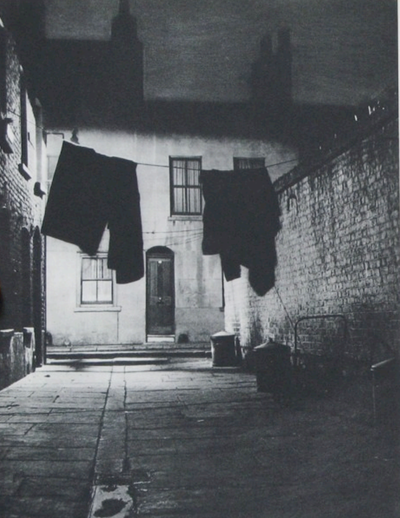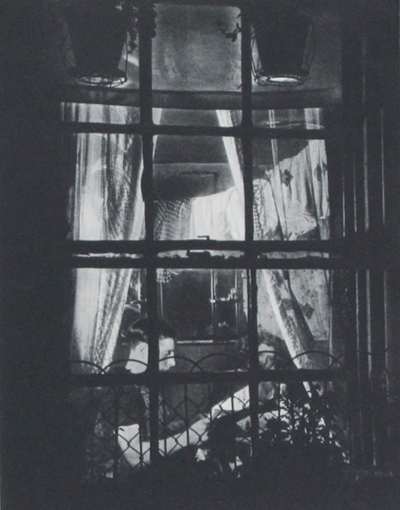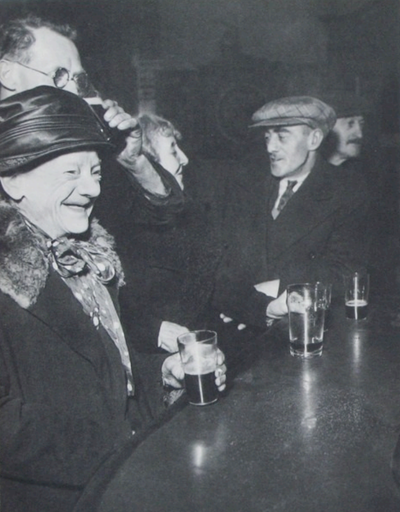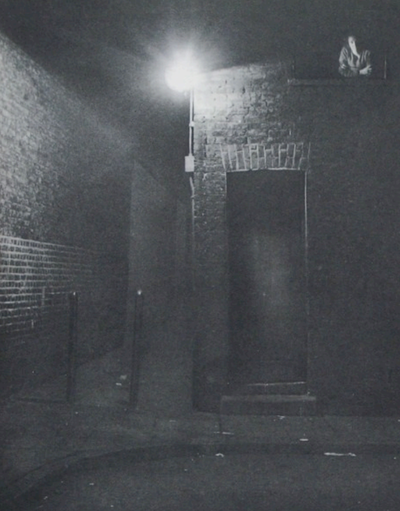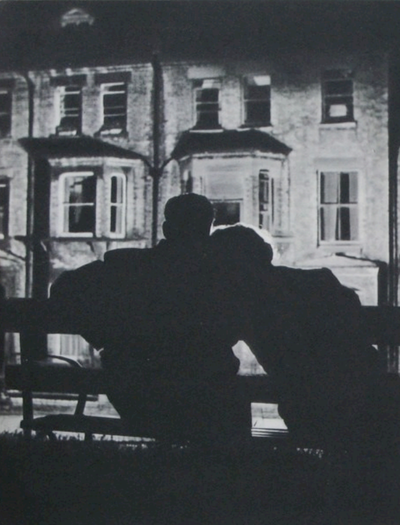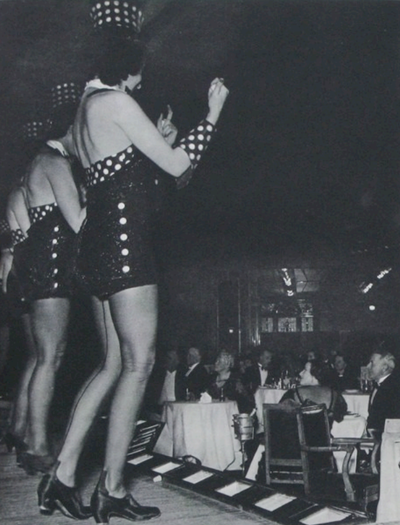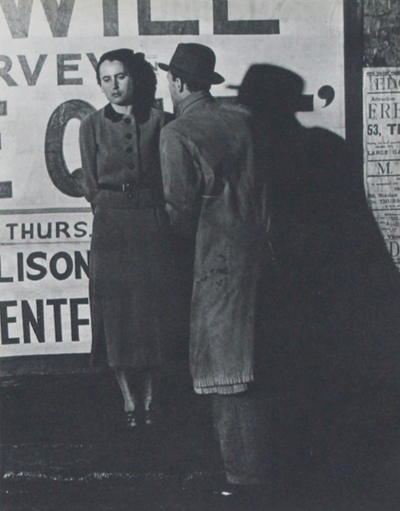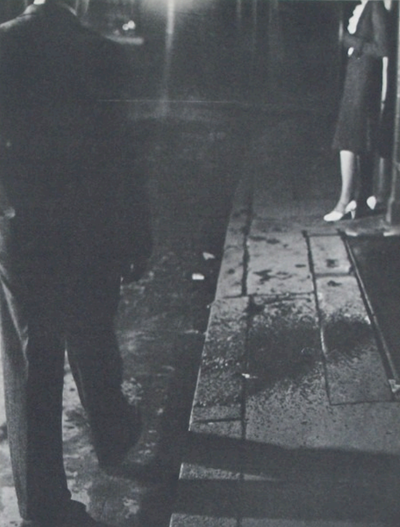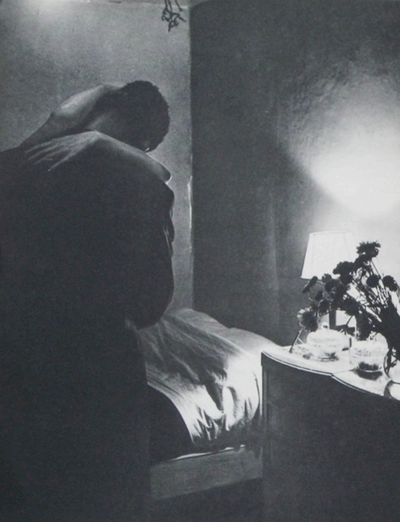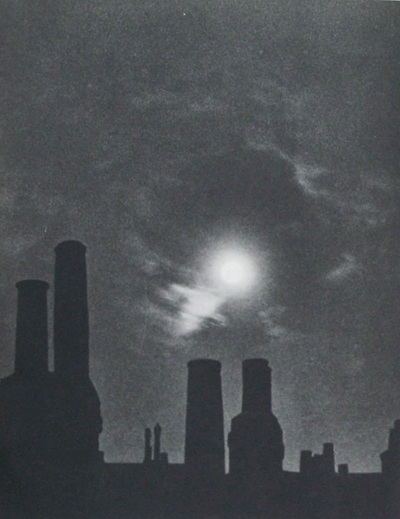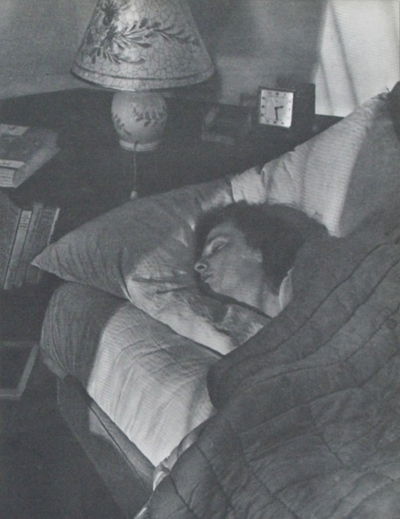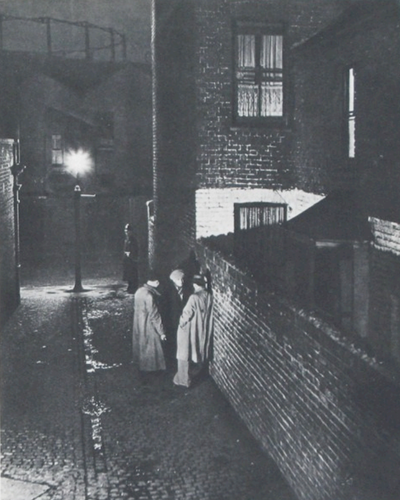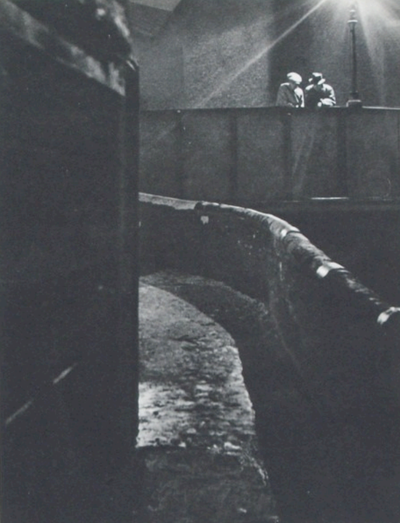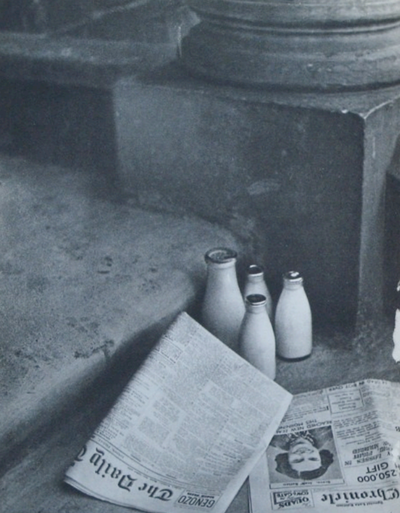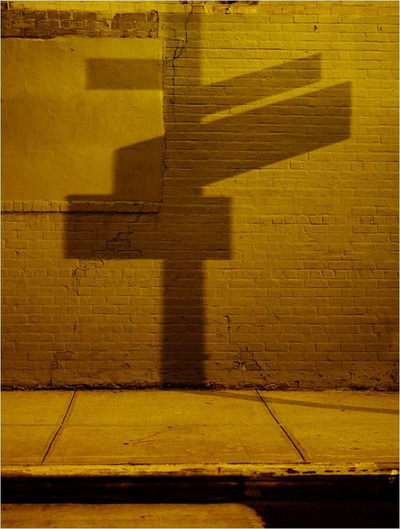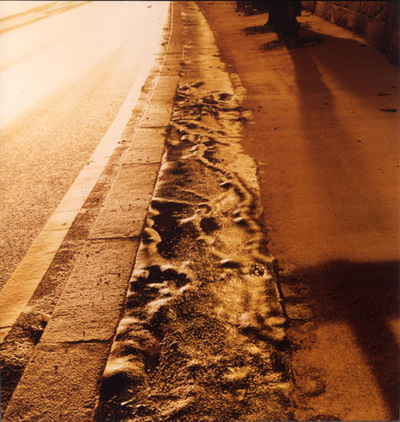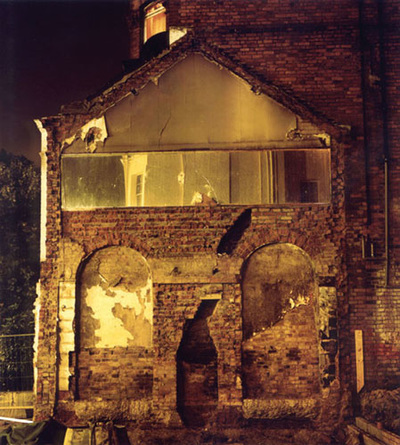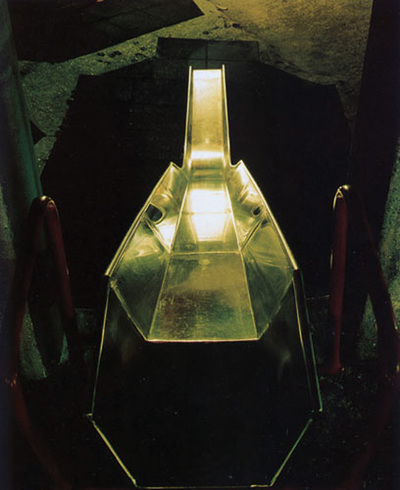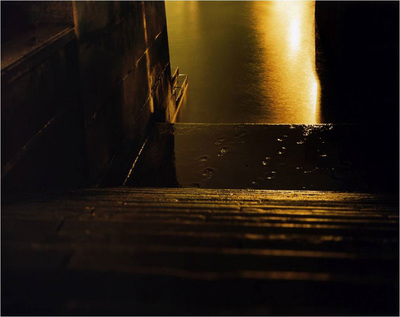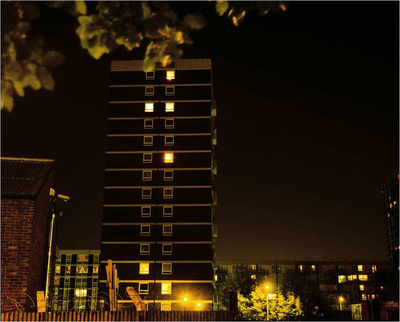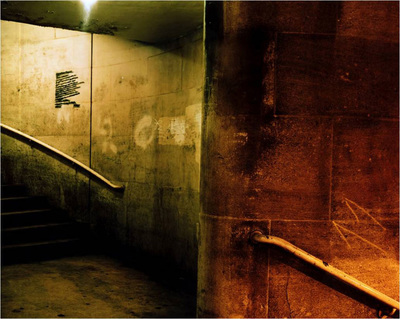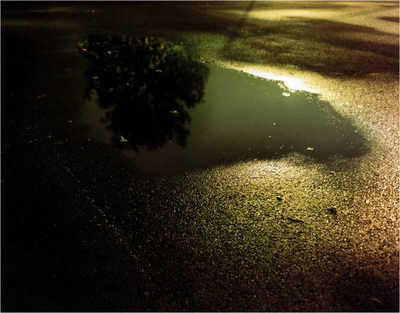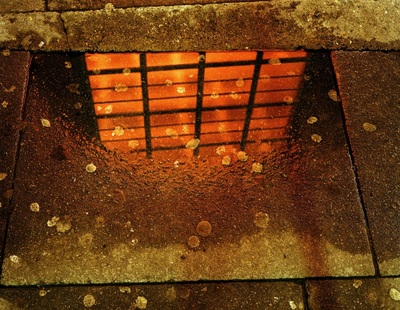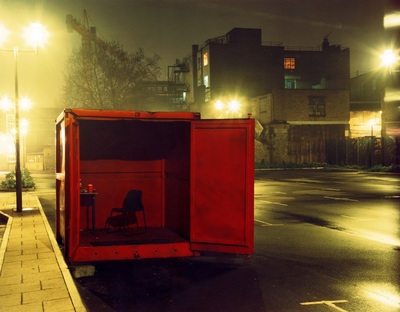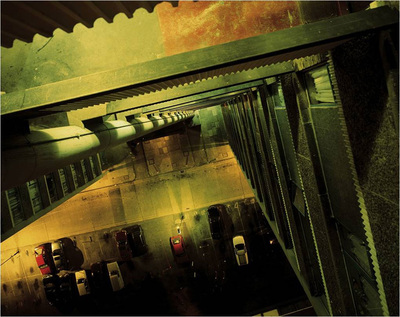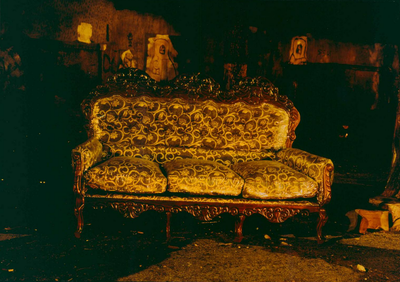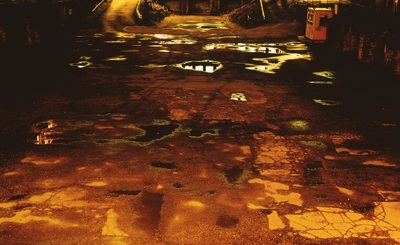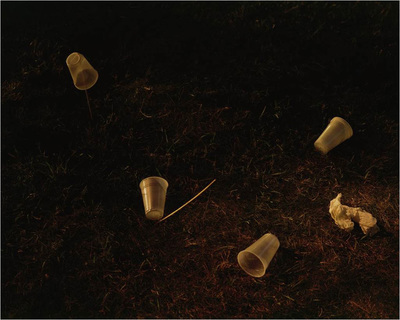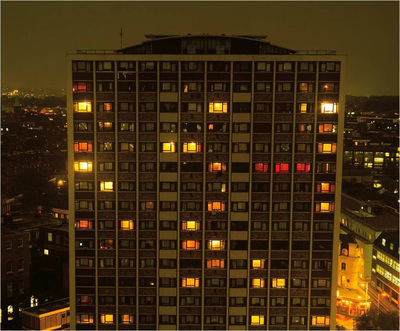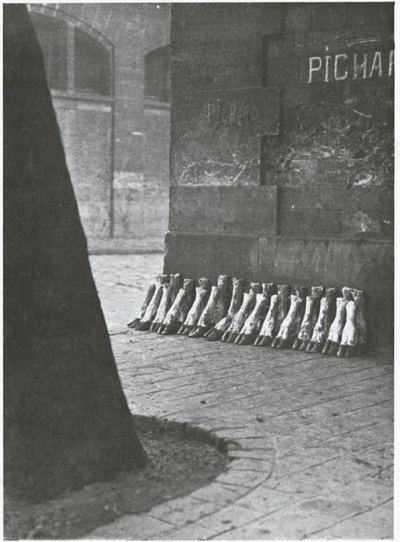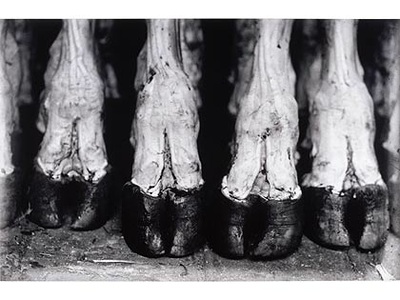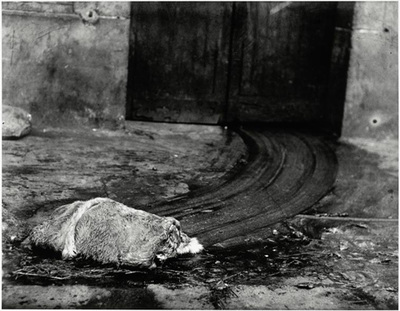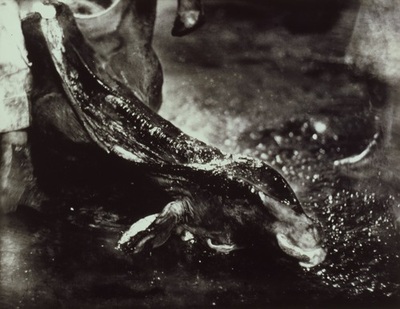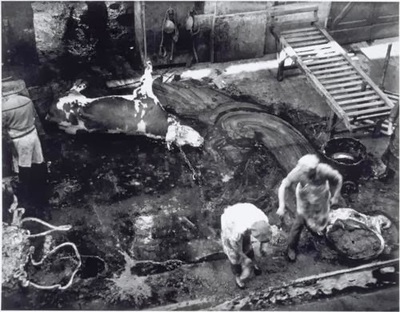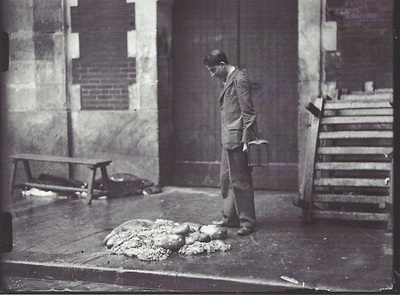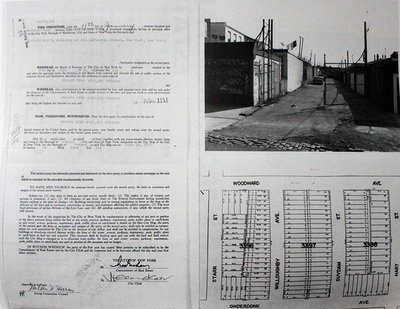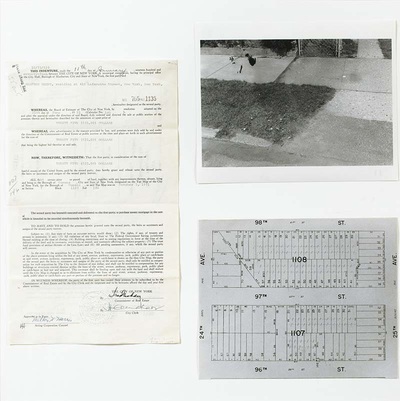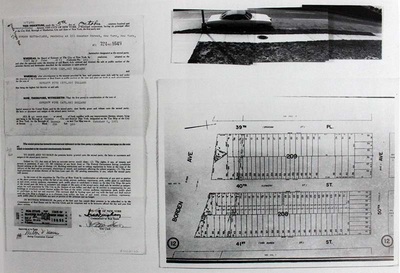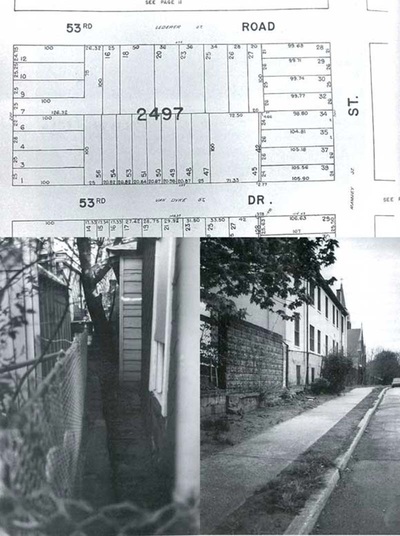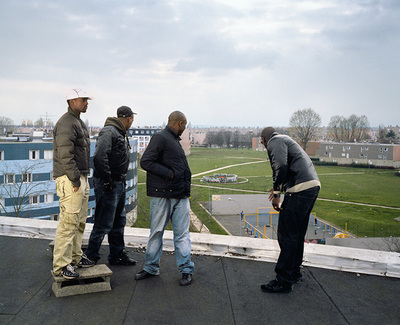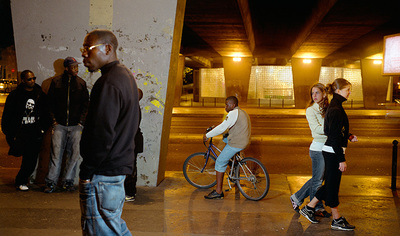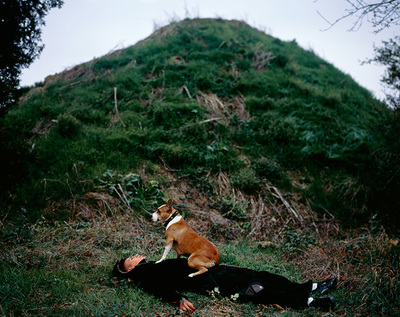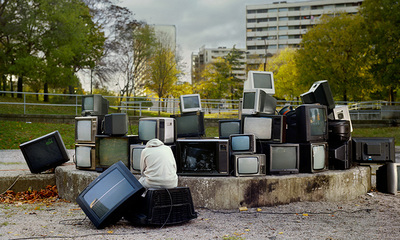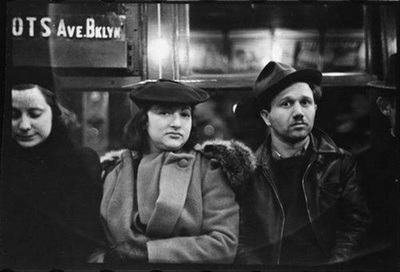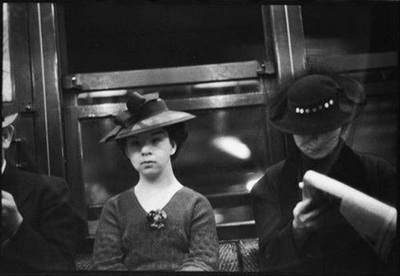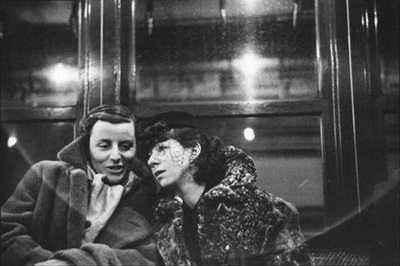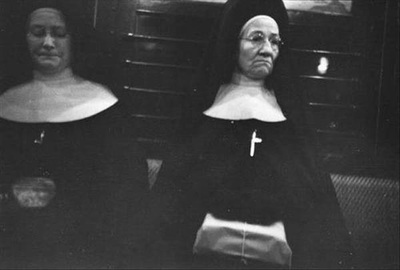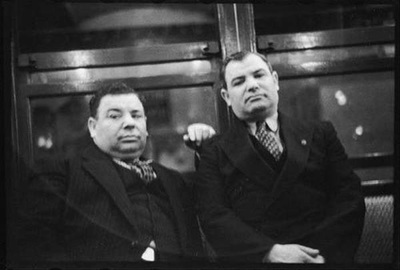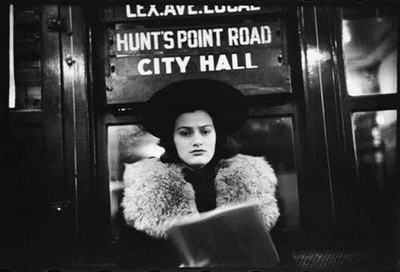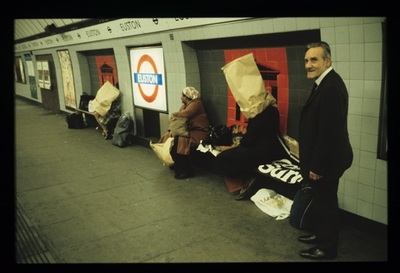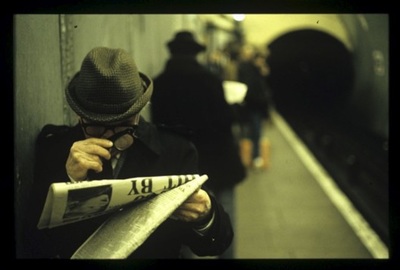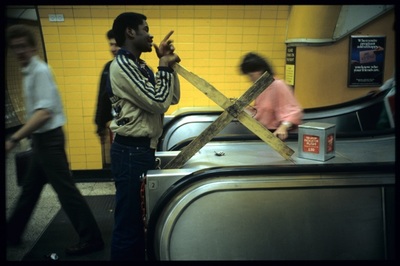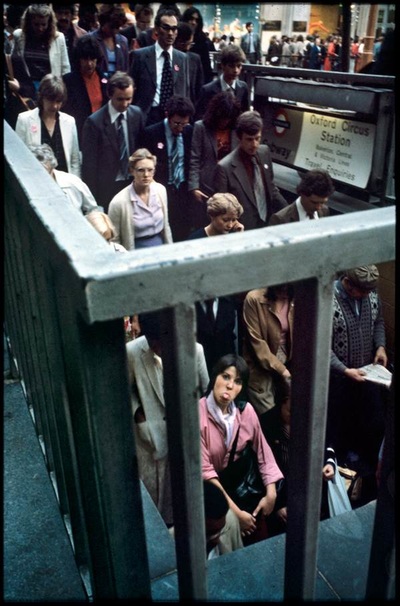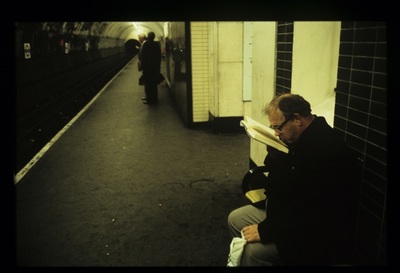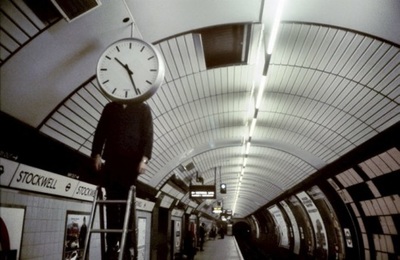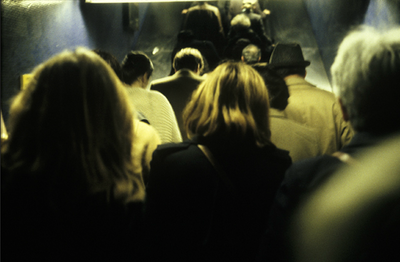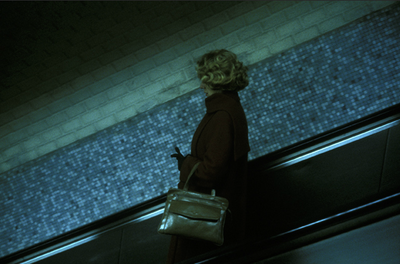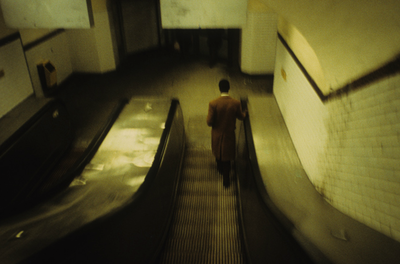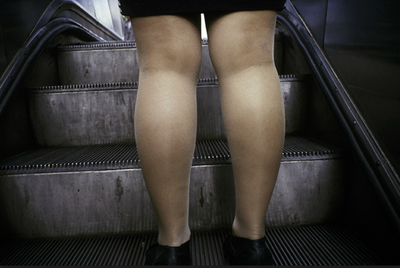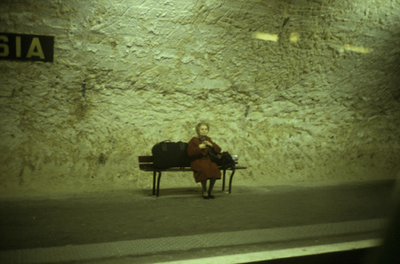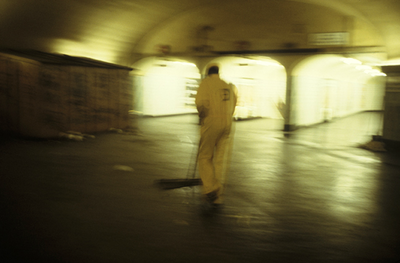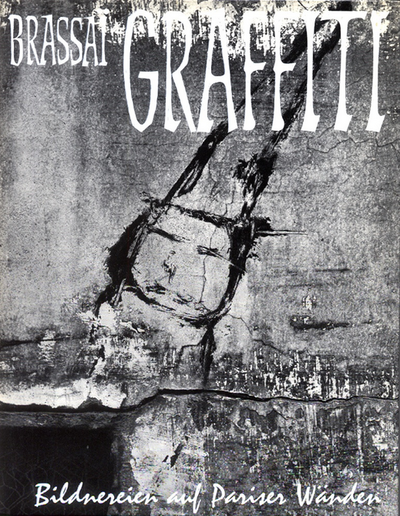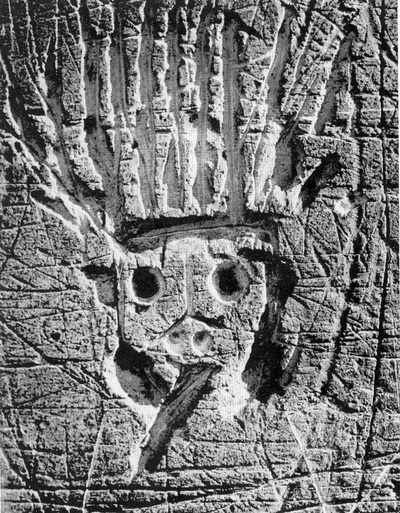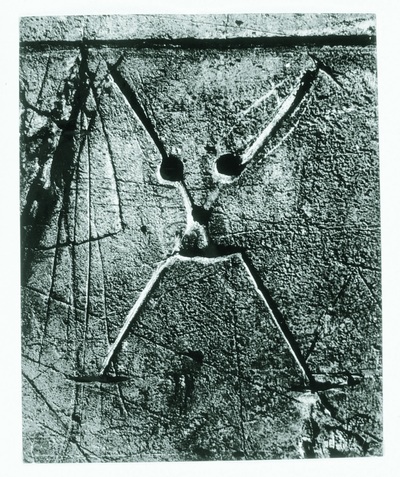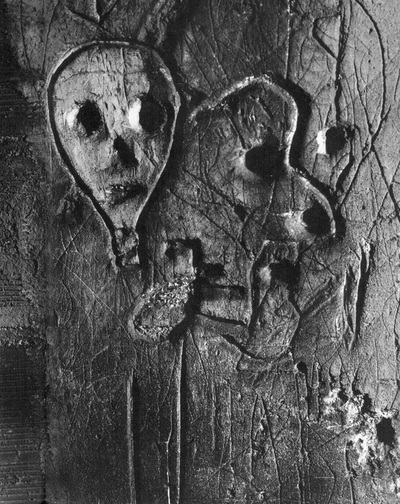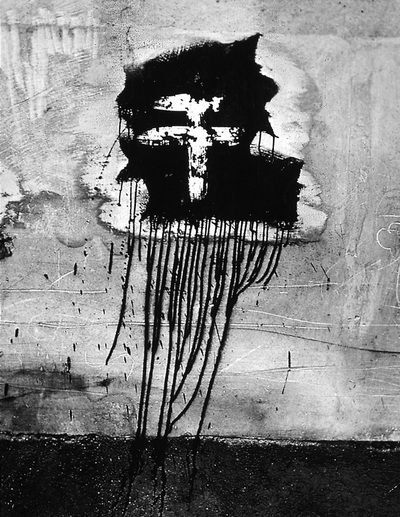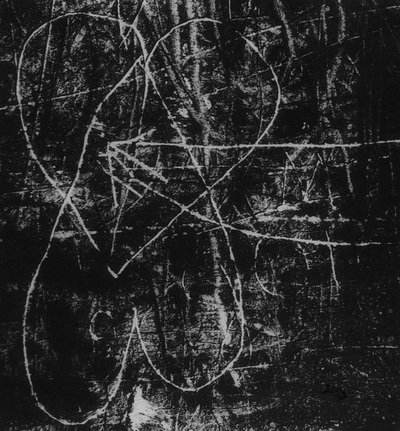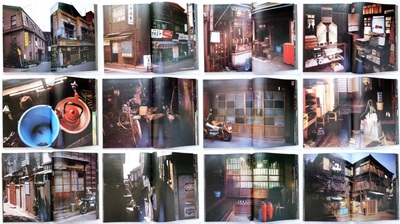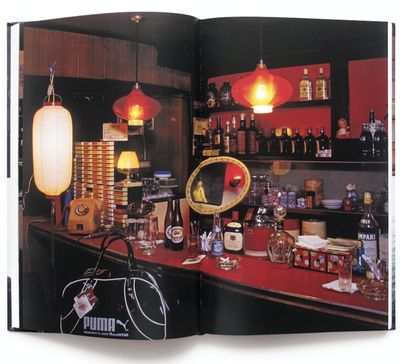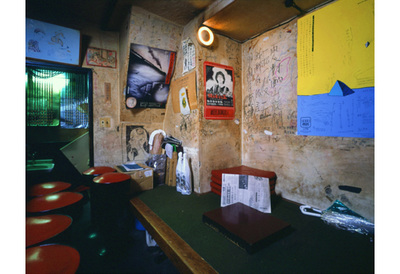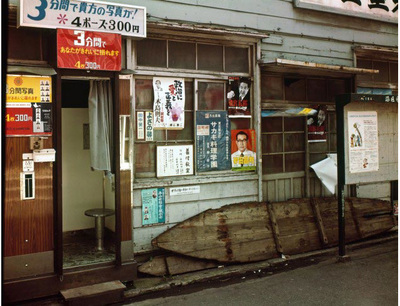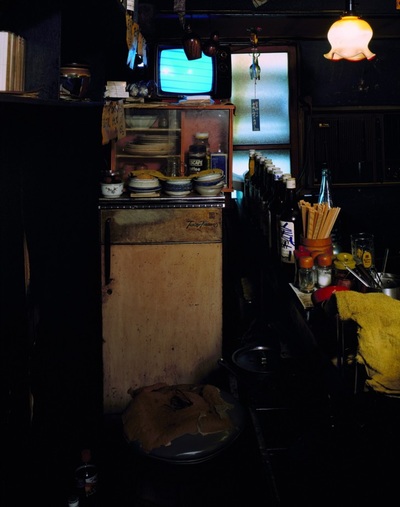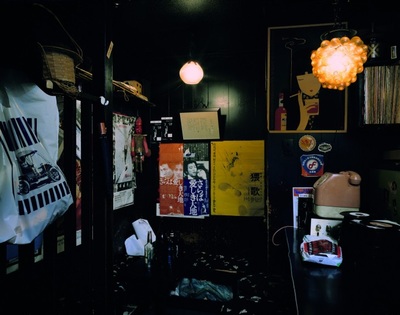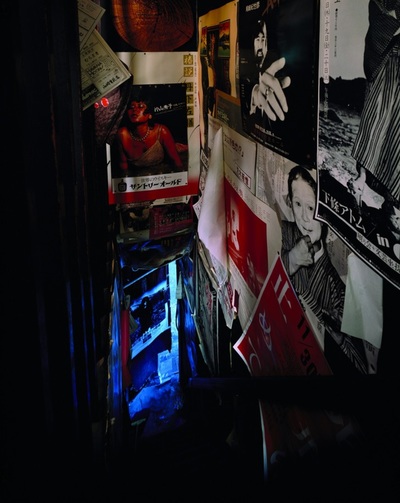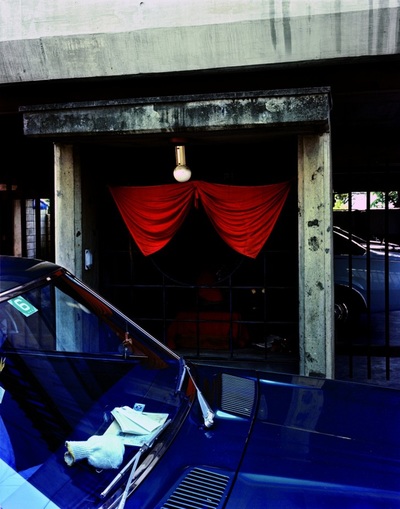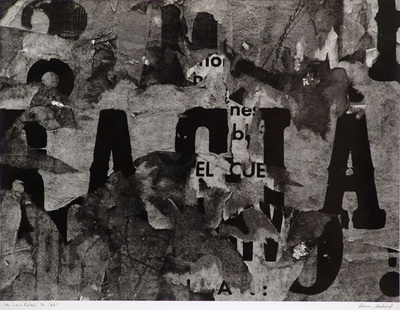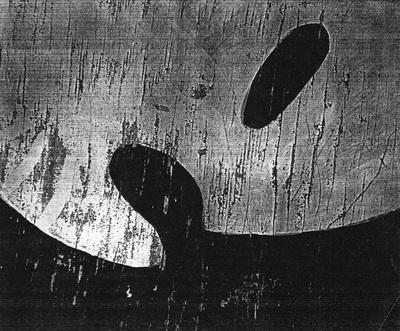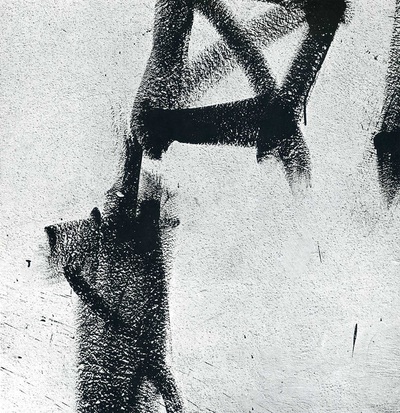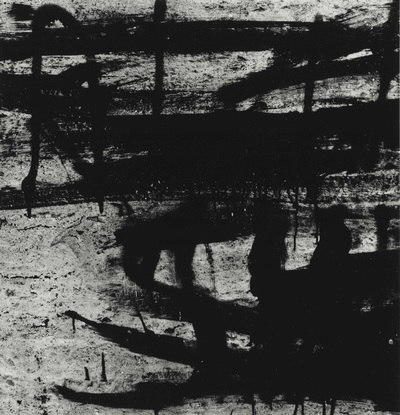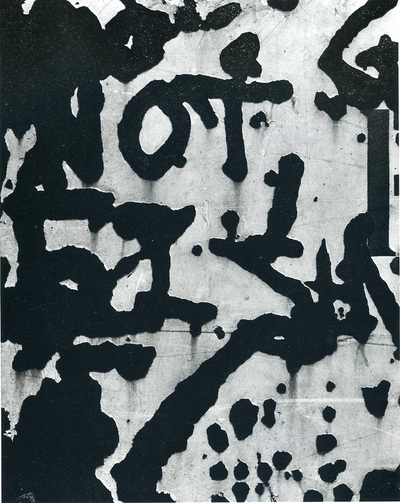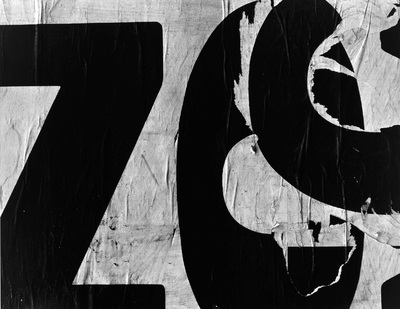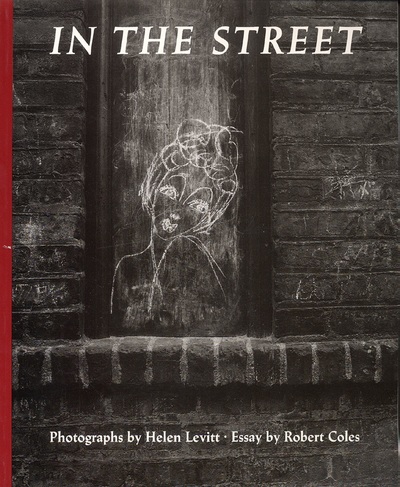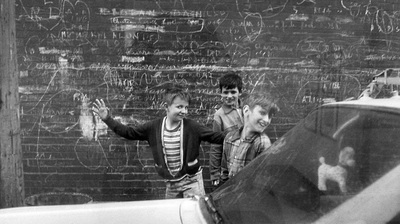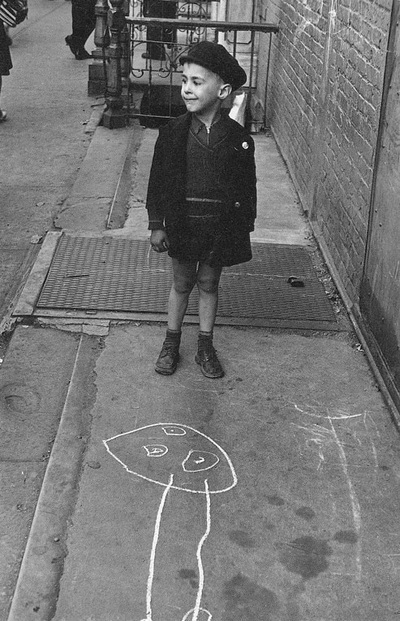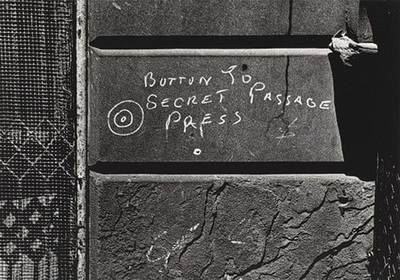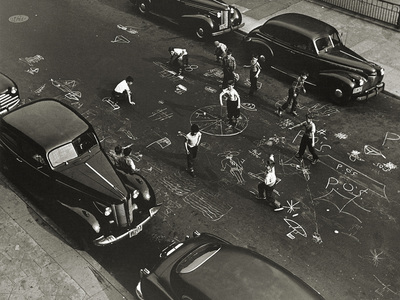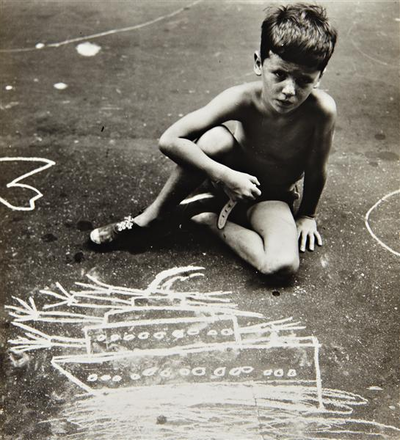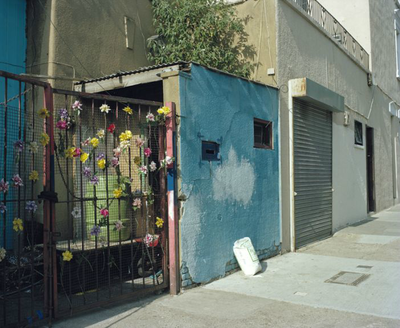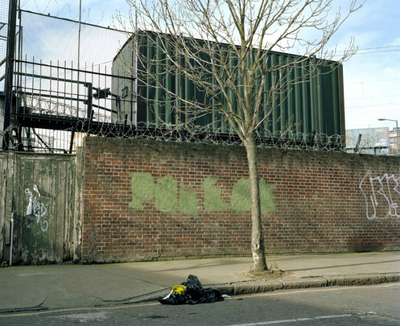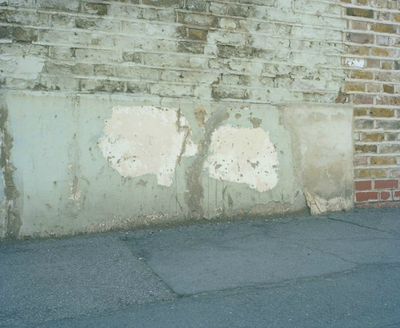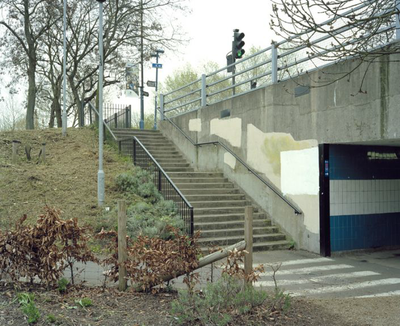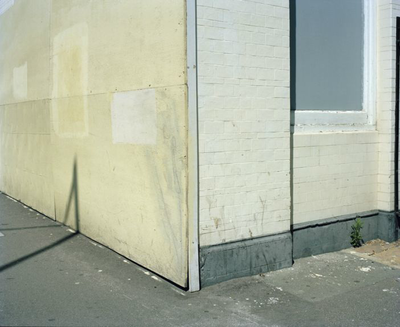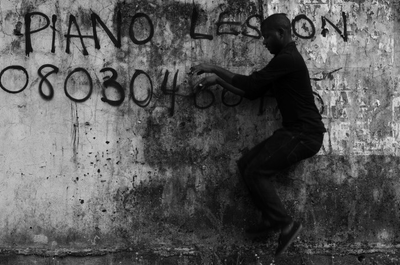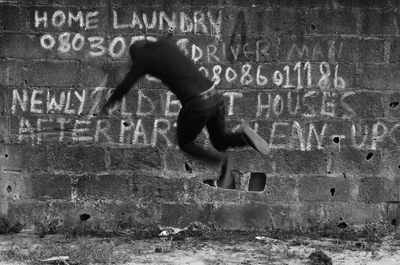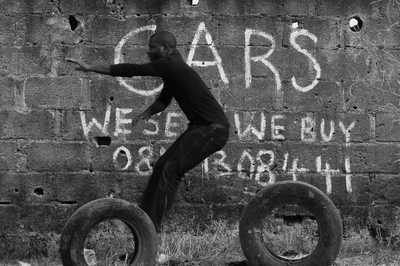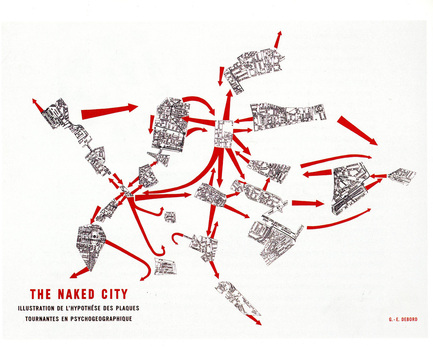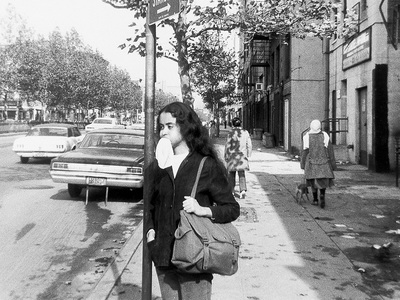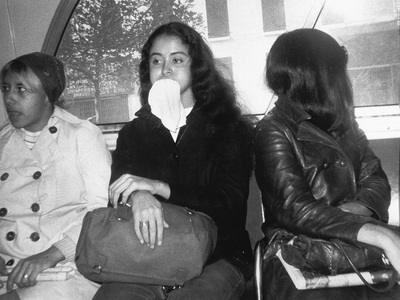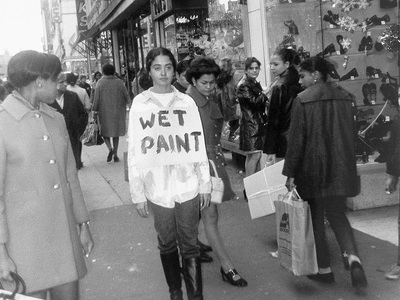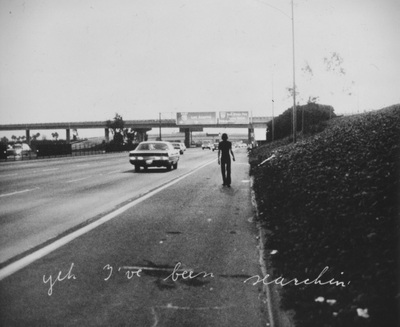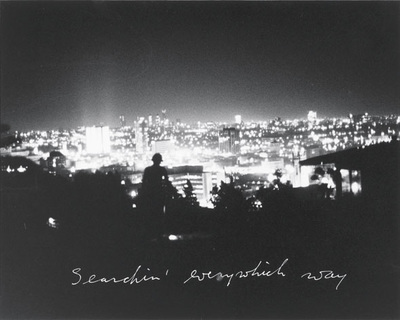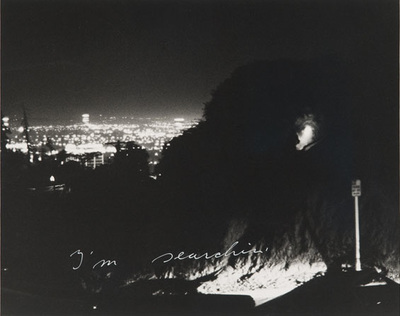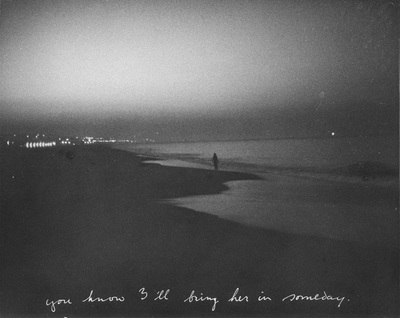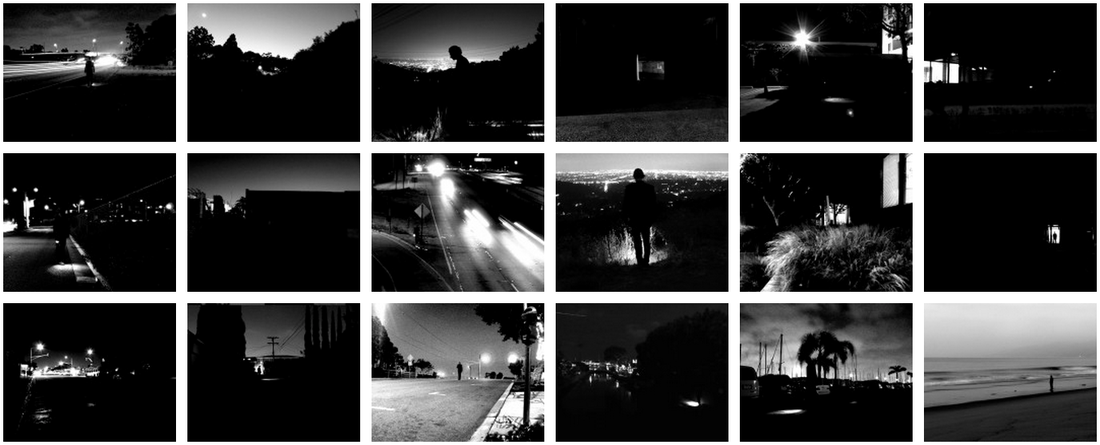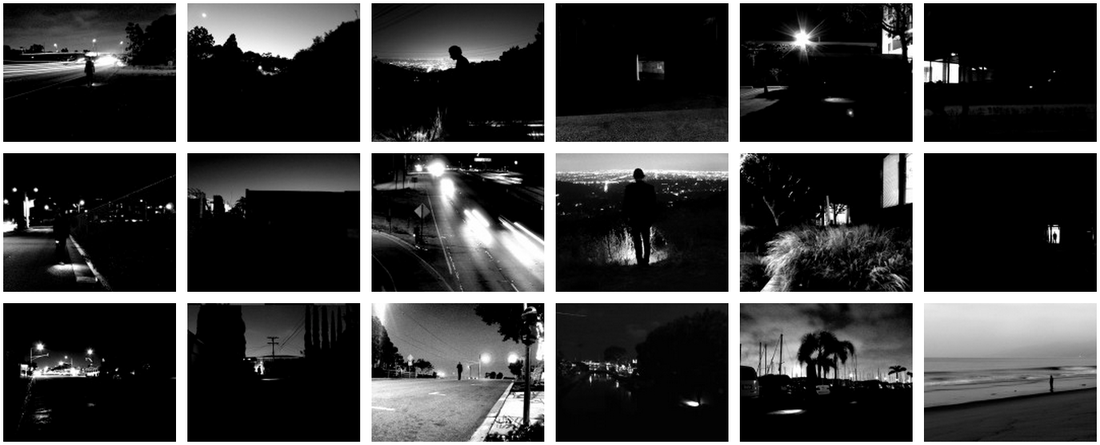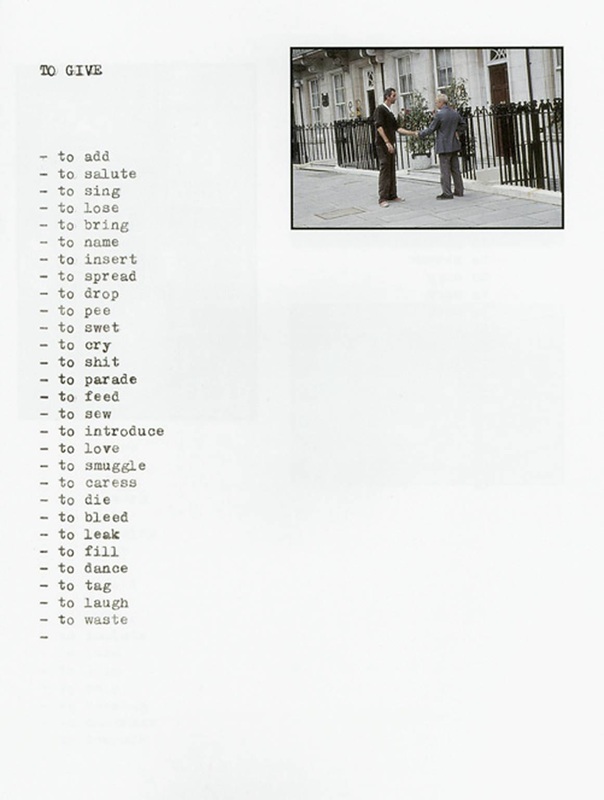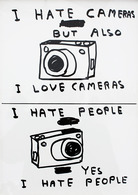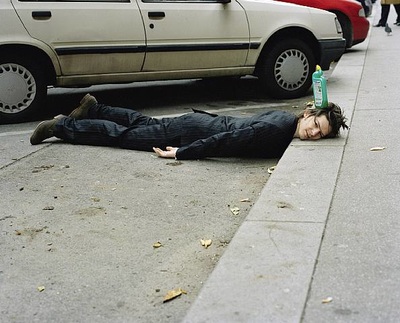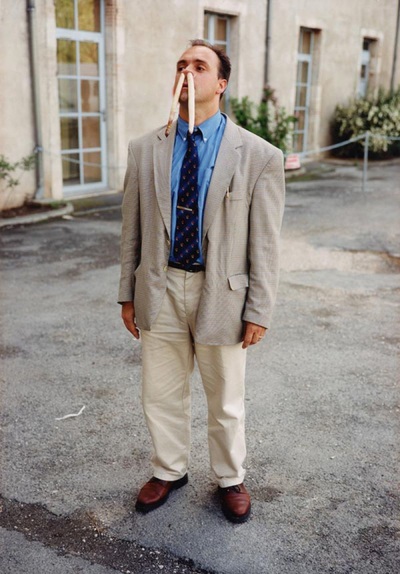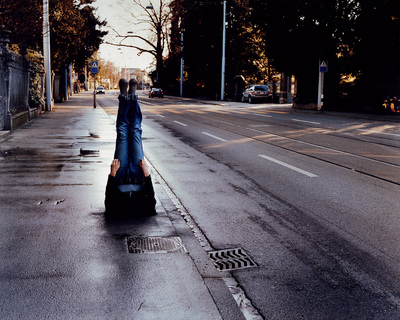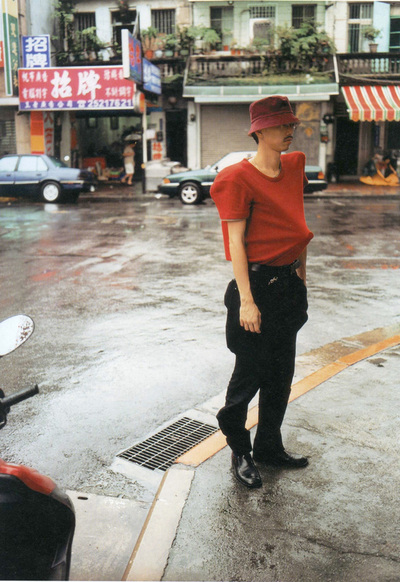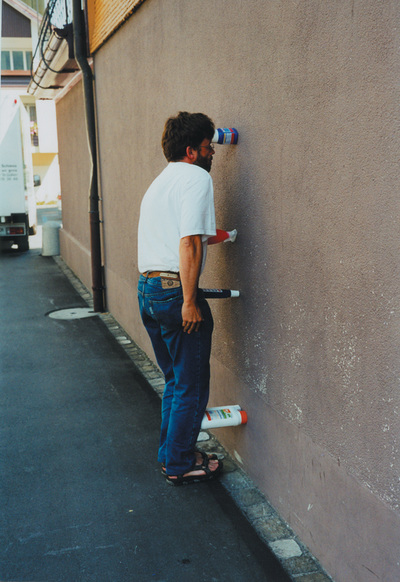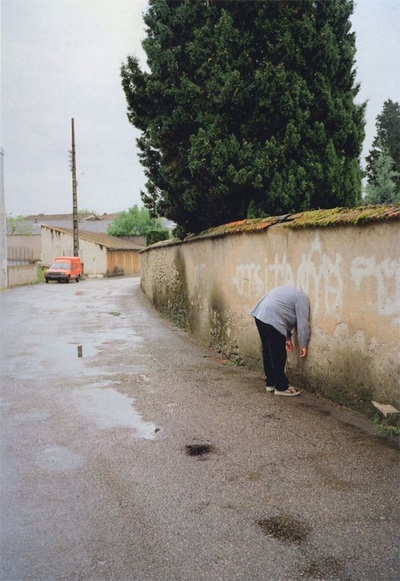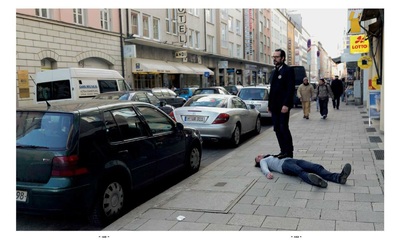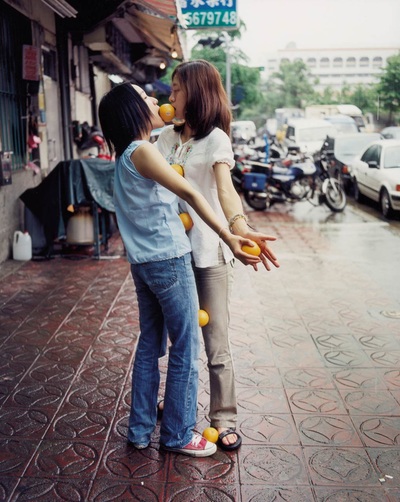Dream City
Chance is always there. We all use it. The difference is a poor photographer meets chance one out of a hundred times and a good photographer meets chance all the time.
-- Brassai
At the core of Surrealist aesthetics, the marvellous was sometimes revealed rather than created. Always on the look-out for quirks of fate in everyday life, the artists sought this notion in the most unexpected places, in the banality, even triviality, of everyday life. The relationship between Realism and Surrealism was gradually transformed, showing that the surreal could be an inherent part of reality itself. The real and the marvellous became "connected vessels" as André Breton put it. From that point, the frontiers between work of art and document became blurred, the artist turned into a wanderer, a collector of "finds", of "petrifying coincidences", incessantly questioning the familiar order to unearth its "bewildering strangeness".
-- La Subversion des Images, surréalisme, photographie, film - Pompidou Centre exhibition catalogue.
|
The city, specifically the city of Paris in the 1920s and 30s, became a playground for the Surrealists as they sought to reinvent our attitude to reality. They were the first to see the strange beauty in Eugene Atget's documentary images of the city. Their wanderings through the city, taking inspiration from Baudelaire's Flaneur, paved the way for psychogeography and the Situationists' dérives of the 1950s and 60s. Their interest in the city at night, made most famous by Brassai's spooky images, and the liminal spaces of the suburbs, are themes which continue to interest contemporary artists. If people were to be liberated from paralysing conformity then their relationship to urban space would need to be radically altered. As a backdrop for stories of mad love, the potential of chance meetings revealing the marvellous in the everyday and a storehouse of poetic objects, the city was a place of extremes that inspired the Surrealists and continues to intrigue contemporary artists and photographers.
|
The street, which I thought capable of divulging its unexpected detours to my life, the street with its anxiety and views, was my true element: nowhere else could I draw such a wind of possibility.
-- André Breton
THE PASSIONATE SPECTATOR
The Flaneur, street photography, Peter Fraser & Daido Moriyama
The French poet Charles Baudelaire used the word "flåneur" to describe the idle wanderer, a dandy who walked aimlessly through the city, drawn to its many delights. Later, the writer Walter Benjamin used the word to describe the modern urban spectator, an amateur detective and investigator of the city. The flåneur was a student of the city, an observer who was free to gather information as well as enjoy the spectacle of urban life - the street cafés, arcades, window displays, parks and other amusements.
The crowd is his element, as the air is that of birds and water of fishes. His passion and his profession are to become one flesh with the crowd. For the perfect flâneur, for the passionate spectator, it is an immense joy to set up house in the heart of the multitude, amid the ebb and flow of movement, in the midst of the fugitive and the infinite ... Thus the lover of universal life enters into the crowd as though it were an immense reservoir of electrical energy. Or we might liken him to a mirror as vast as the crowd itself; or to a kaleidoscope gifted with consciousness, responding to each one of its movements and reproducing the multiplicity of life and the flickering grace of all the elements of life.
-- Charles Baudelaire, The Painter of Modern Life, 1863
What do these images have in common? What do they reveal about urban life? Why might the Surrealists have been interested in the way that photography is able to record the urban experience?
Take a look at some examples of later street photography. What similarities/differences can you see?
The photographer is an armed version of the solitary walker reconnoitering, stalking, cruising the urban inferno, the voyeuristic stroller who discovers the city as a landscape of voluptuous extremes.
-- Susan Sontag, On Photography
Suggested Activities:
- Take a walk through the city. Wander wherever you like. Get a little bit lost. Try unfamiliar routes and follow your instincts. Photograph anything that strikes you as unusual, amusing, incongruous. Look out for contrasts between foreground and background, odd signs or instructions. Look down at the floor. Change your viewpoint occasionally - crouch down or hold the camera above your head. Find a high vantage point. Think carefully about framing your subject - consider cropping in unusual ways. Allow your mind to wander but be on the lookout for the uncanny. Try not to over edit. Allow yourself to make all sorts of pictures - whatever takes your fancy.
- When you return from your wanderings, sequence a set of images considering juxtapositions and connections. What story do they tell?
- Consider how best to display them - a book, a slideshow, an installation...? Will you give the images titles? Will you supply any additional text?
It's almost as if there's a smell in the air and I'm being forewarned that a moment is approaching so I need to have the camera ready. In a sense I never set out to do anything other than make myself available, to allow that moment where there's an upsurge of energy from the unconscious mind into the conscious mind which is the moment when I know I have to make a photograph.
-- Peter Fraser
|
|
|
|
|
Man Ray & Eugène Atget
|
Surrealist photographer Man Ray was fascinated by the work of Eugène Atget. Man Ray lived on the same street as Atget in Paris: rue Campagne-Première in Montparnasse. Atget visited Man Ray probably and showed him his work. Man Ray purchased a number of the photographs and shared them with his artistic circle, including the American photographer Berenice Abbott. In 1926 he created an album of Atget's photographs that he had personally collected. What did Man Ray admire about Atget's images of Paris? What did the Surrealists see in Atget's work that even he was unaware of?
|
Their impact was immediate and tremendous. There was a sudden flash of recognition – the shock of realism unadorned. The subjects were not sensational, but nevertheless shocking in their very familiarity.
-- Berenice Abbott
The city in these pictures looks cleared out like a lodging that has not yet found a new tenant. [...] Not for nothing have Atget’s photographs been likened to the scene of a crime. But is not every square inch of our cities the scene of a crime?”
-- Walter Benjamin
Suggested activities:
I have assembled photographic glass negatives… in all the old streets of Old Paris, artistic documents showing the beautiful civil architecture from the 16th to the 19th century. The old mansions, historic or interesting houses, beautiful façades, lovely doors, beautiful panelling, door knockers, old fountains, stylish staircases (wrought iron and wood) and interiors of all the churches in Paris. This enormous documentary and artistic collection is now finished. I can say that I possess the whole of Old Paris. |
- Make a selection of your favourite images by Eugène Atget (or another photographer whose work means a lot to you). Put them in a handmade album. Explain why you have chosen and sequenced them in a particular order. What do they mean to you?
- When the Surrealists published an image by Atget (of a group of people staring at the sky) on the cover of their magazine La Révolution Surréaliste in 1926, they changed its title from 'The Eclipse, April 1912' to 'The Last Conversions'. Choose any famous photograph and re-title it. Try a series of different titles and notice the effect these have on the image. Think more carefully about the titles you give your images from now on.
- Some of Atget's images document the ragpickers who lived and worked on the edges of the city, recycling other people's waste. In other images Atget is interested in the strange arrangement of objects in shop windows and on pavements or in the unusual collections of objects often attached to tradesmen like the lampshade salesman. Explore the work of Michael Wolf (e.g. The Box Men of Shinjuku Station or the series of Multiples) and Richard Wentworth (e.g. Making do and getting by), both of whom (like Atget) are interested in our relationship to things in the city. Attempt to make a series of images (perhaps even a typology) of things that you see as you walk through the city - on your way to school or college, whilst shopping, whilst travelling on public transport. Notice things out of place, or numerous versions of the same thing popping up in different places, broken things, or things abandoned.
LOVE IN THE CITY
'Nadja'
The streets of the city, the surrealists believed, offered innumerable possibilities for erotic encounters. Many of their writings describe chance meetings, in which a fated couple are guided towards each other without knowing it, or even being aware of the other’s existence. In October 1926, André Breton, leader of the Surrealist group, noticed a young, poorly dressed, delicate looking woman walking towards him in the street. “I had never seen such eyes,” he writes. “Without a moment’s hesitation, I spoke to this unknown woman.” She told him she called herself Nadja, “because in Russian it’s the beginning of the word hope, and because it’s only the beginning.” Their meetings are accompanied by strange events and coincidences. Breton eventually tires of Nadja’s odd behaviour. Despite her pleas he abandons her. At the end, he informs us that Nadja was "mad" and had been sent to an asylum.
|
The ingredients in this story - chance encounters, uncontrollable desire, enigma, coincidences, aimless wandering through the city, madness - are typical of Surrealism. Breton chose to use a mixture of photographs (by his fellow Surrealists, Boiffard and Man Ray) and commercially available images in the book. They are pictures of various people, places, and objects which the author visits or is haunted by in Nadja’s presence and which inspire him to meditate on their reality or lack of it. It is Nadja's effect on those around her that defines her character. She has been described as "a state of mind, a feeling about reality, a kind of vision", and the reader sometimes wonders whether she is real. “Nadja is so wonderfully free from all regard for appearance that she scorns reason and law alike.” -- Simone de Beauvoir.
Here are some examples of Breton's proof copies of the images used in Nadja.
Here are some examples of Breton's proof copies of the images used in Nadja.
Love on the Left Bank
Set in and around the hinterland between Odéon and St Germain-des-Prés, shot in black and white, the book is an impressionistic narrative that centres on a fictional character, Ann, a beautiful and enigmatic bohemian, and her circle of vagabond friends, who haunt the bars, cafes and clubs of the area. Van der Elsken's camera trails Ann as she works as an exotic dancer, drinks, flirts, fights, sleeps, falls in and out of love.
-- Sean O'Hagan
Ed van der Elsken's fantastic photo book 'Love on the Left Bank' was originally published in 1954. Like Brassaï's images of the 1930's (see below) documenting the nocturnal world of bars and brothels, van der Elsken describes a particular quality of life - liberated, unconventional, raw, instinctive and driven by emotion. The book is structured to suggest an unfolding story with an accompanying fictional text.
I report on young, rebellious scum with pleasure … I rejoice in everything. Love. Courage. Beauty. Also blood, sweat and tears. Keep your eyes open.
-- Ed van der Elsken
Invisible City
|
|
In Invisible City, Schles documents his life in New York City's East Village during its heyday in the tumultuous 1980s. The book has been recently reprinted and is comparable with the work of Brassï and van der Elsken. In his later book Night Walk, Schles embodies Susan Sontag's coinception of the flâneur, a "connoisseur of empathy... cruising the urban inferno, the voyeuristic stroller who discovers the city as a landscape of voluptuous extremes."
You can download and view an enhanced PDF version of Invisible City from the fantastic Photobook Club site.
|
Suggested Activities:
|
|
Here are some examples of images by Duane Michals:
NOCTURNAL CITY
The City by Night - Brassai, Bill Brandt & Rut Blees Luxemburg
The surrealism of my pictures was nothing but the real made eerie by vision. I was trying to express reality, for there is nothing more surrealist.
-- Brassai
Although Brassai was never officially part of the Surrealist group, his work was admired by them and he worked alongside them in the Paris of the 1930s, occasionally collaborating with individual members like Salvador Dali. Brassai's images of Paris at night exposed an unfamiliar city - a place of rain soaked streets, looming shadows, all night cafés, seedy bars, prostitutes and gangs of criminals. Brassai experimented with a range of lighting effects, sometimes supplying additional light himself with a flash, but often relying on the city's famous electric street lights. Perhaps what the Surrealists admired about Brassai's images was the way they seemed to describe a nocturnal city of the subconscious, a dream city. This Paris was by turns subversive, dangerous, ghostly and illicit - a perfect Surrealist concoction.
Bill Brandt, who was strongly influenced by the Surrealists, documented London's netherworld in much the same way that Brassai had explored the nocturnal streets of Paris. In his second book, A Night in London of 1938, Brandt documents the city in a sequence of 64 photographs, beginning with a foggy view of St. Paul's from across the river and ending with the morning milk on the doorstep.
Henry Wessell's series 'Night Walk' was created as the photographer walked his dog after dinner and in the middle of the night. He has spoken about the strange "somnambulistic" state he was in when he made some of the pictures.
In this short video, Wessel discusses photography and the mind, urging photographers to keep our minds out of the way when we make photographs. Wessel is a fantastic artist who has lots to say about the way photography works. We'll encounter him again a bit later on.
In this short video, Wessel discusses photography and the mind, urging photographers to keep our minds out of the way when we make photographs. Wessel is a fantastic artist who has lots to say about the way photography works. We'll encounter him again a bit later on.
Rut Bless Luxemburg is also interested in the appearance of cities at night. She uses a medium format camera, available light and exposures of up to 20 minutes to create photographs of seemingly deserted corners of the city, often surprising the viewer with unexpected angles or viewpoints. Although many of her images take the street as a subject, they are meticulously planned, quite unlike the rapid fire work of a typical street photographer.
Rut Blees Luxemburg’s photographic work explores the public spaces of cities, where the ambitions and unexpected sensual elaborations of the ‘modern project’ are revealed. In so doing she brings to light the
overlooked, the dismissed and the unforeseen and creates uncanny and vertiginous compositions whose constituent parts suggest different ways of experiencing our shared common spaces.
-- from the introduction to the book Commonsensual
Suggested Activities:
- Photograph your neighbourhood at night. Experiment with a tripod and long exposures. Point the camera at ordinary looking subjects to see how they are transformed by artificial lights.
- Working with a partner, stage shots of each other taken at night.
- Explore the work of other photographers who are interested in the strange light effects when working at night or in twilight. For example, Gregory Crewdson, Ori Gersht, Bill Henson, Chrystel Lebas and Liang Yue.
TERRAIN VAGUE
Eli Lotar and liminal spaces
At the gates of Paris on empty lots - gardens for poor kids - lie scattered the distinct debris of uncertain fortunes. A pot lick of happiness offers itself to the passing collector, poet or pair of lovers here at the outer edge of traffic, of trucks and trains.
So begins George Franju's 1949 film Le Sang des Bêtes (Blood of the Beasts). I have stopped it here at just over 3 minutes because the majority of the film explores the slaughterhouses of the outskirts of Paris and the footage is brutally honest. I would advise not watching the whole film unless you have a strong stomach.
Franju was clearly influenced by the ideas of the Surrealists and the introduction to this film sets the scene for another key Surrealist interest - the edge of the city. This is where chance encounters are more likely to occur, where poetic objects (objets trouvé) might be discovered in flea markets, where lovers meet to escape the eyes of watchful guardians and neighbours and, crucially, where the dirty, violent and bloody business of preparing meat for the tables of the city's homes and restaurants is carried out. The most famous set of images of Paris' slaughterhouses are by Eli Lotar:
Consider what makes the first of these images so extraordinary? How has the photographer chosen to depict his subject? Why might these scenes have interested the Surrealists? Why do activities like these tend to take place at the edges of cities? What else happens around the edges of cities that is strange, unusual or distasteful?
Liminal spaces are thresholds. In other words, they tend to be in between spaces, spaces where there is no clearly defined function or purpose, other than to be a passage to somewhere else. In a house these can be doorways, passageways, hallways or landings. Where might you find liminal spaces in a city?
Liminal spaces are thresholds. In other words, they tend to be in between spaces, spaces where there is no clearly defined function or purpose, other than to be a passage to somewhere else. In a house these can be doorways, passageways, hallways or landings. Where might you find liminal spaces in a city?
|
|
The London Nobody Knows is a documentary released in 1967 that has been described as ‘a stroll around the city with James Mason’. The film, directed by Norman Cohen and based on the book by Geoffrey Fletcher, is a "sharp and sombre portrait of a fast disappearing city" (ICA). This short film The London Nobody Knows Now revisits some of the original film's locations and includes scenes in which James Mason, the original guide, shows us some of London's forgotten and mysterious history.
Why not create your own guide to a place Nobody Knows? |
Gordon Matta-Clark Real Properties - Fake Estates, 1973-4
In the early 1970s, Gordon Matta-Clark discovered that the city of New York occasionally auctioned off “gutterspace”. The properties are fragments of the city grid, patchy, useless plots of land that remained after the city was mapped out and land use designated. The left over spaces were along curbs, between houses, even inside a building. The land was unusable for any form of real estate development. The artist collected an archive of deeds and maps, tax receipts, videotapes, other documents and photographs. He planned that the project would consist of the documentation of these urban voids and the deed for the property itself, which the purchaser of the art work would then own. Unfortunately, he died before he could fully realise the plan.
Mohamed Bourouissa Peripherique, 2010
This series was created in the anonymous housing estates, playing fields, cafes, stairways, roundabouts, the roofs of tower blocks of the suburbs of Paris. Peripherique (meaning both peripheral and ring road in French) refers to both the place and the people who are marginalised both physically and socially by our societies. Bourourssa's images convey a sense of conflict without it being physically present in an image. The tension is there in the setting and the simple play of gazes and even in the situations of vacancy. The highly constructed images walk the lines between fiction and photo journalism.
- Take a walk in your local neighbourhood. Photograph those liminal spaces that seem to lack a clear function or belong to anyone. You might want to indicate the locations on a map and display the images alongside other factual information.
- Document a series of edge spaces - pavement gutters, park fences, building works etc.
SUBTERRANEAN CITY
Big cities often have subterranean transport systems and these have proved exciting for photographers. Here are some examples, demonstrating the ways in which the streets under the ground have been documented.
Walker Evans Subway Portraits |
Bob Mazzer On the Tube |
Check out these rarely seen images of the New York subway in the 1960s by photographer Danny Lyon and images from the famous book Subway by photographer Bruce Davidson.
Dolores Marat Metro
Marat documents city life, mainly in Paris and New York, using only available light and slide film. She prints her images using the Fresson process. Her images of the Metro often reveal lonely commuters or underground workers. In the introduction to her book Edges, the writer Pascal Bonafoux describes the world depicted by Marat in the following way:
These are napes of necks on an escalator. Hair, short., brown, blonde, long, white. Napes following, going past each other. Napes which Time is hurrying along. Time for an appointment, suburban train timetables. Or this is an old man, behind an escalator banister, hands in pockets. Looking sadly at...This is an old man going by. Another escalator. A woman coming down. The fingers of the gloves held tight in her hands depict the shadow of a little rabbit on the tiles of the underground escalator. Which she doesn't see. Which no one sees. She goes by. Indifferent.
Suggested activities:
- Take a trip on the underground and photograph incidental moments and fragments of the experience. Attempt to capture your feelings about being underground, the atmosphere creating by artificial lighting and the dream-like movement through subterranean 'streets'.
- Photograph the places between the street and the train tracks - the escalators, tunnels and ticket booths.
CITY WALLS
In his introduction to 'Graffiti' Brassai writes about the relationship between the graffiti scratched and scrawled on Parisian walls with the art of pre-historic cave painters:
Everything is magical for the child … fairies, devils, monsters are for him so real that he is scared of them … Art alone can exorcise these phantasms. For it is indeed the power of magic that is at the origin of the power of art. To trace a line, a figure, gives to the child a sense of power and domination that belongs only to the magician. It is only through art that he can bend the world to his will … the power that the prehistoric hunter wanted to exercise on his game by tracing its 'simulacrum' at the back of caves still works on walls of another type.
-- Brassai
For the Surrealists and their contemporaries, the art of children and the insane (Art Brut, as it later became known), was evidence of the universal spirit of creativity. What they admired about this untrained art was its 'primitive' power, its raw energy and its potential to subvert cultural norms. Brassai made a study of graffiti and published these in the Surrealist magazine Minotaure as well as in a book, arranged by theme.
Where does the strength and the fascination of the wall come from? It will play an active, creative role with all who incise on its copperplate engraving-like material. Their eyes popping our of their heads with justifiable curiosity, in hallucinating gazes, will nor be only the eyes of childhood. They will be the eyes of the wall as well, the gaze of the wall, just as all these faces will be the face of the wall, and all the hearts, the hearts of the wall.
-- Brassai, 1960
Brassai's 'Graffiti'
The City as Palimpsest
The walls of a city can be compared to a book or diary on which successive traces have been left by the people who have lived there. Some photographers have explored this aspect of the city, reading it like a book, searching for and documenting an archaeology of signs. In an exhibition from 2013 at the National Museum of Modern Art in Tokyo, Japan, this notion was explored with reference to Brassai and Yutaka Takanashi:
In the city, congested with an almost overwhelming number of signs, new anonymous expressions arise and overwrite a variety of existing expressions, giving rise to unexpected chains of meanings and conflicts. “Palimpsest” is a useful word to consider this superficial play with signs. The word, suggesting a multitude of meanings, is derived from the ancient practice of erasing an original text from a piece of parchment and layering a new one on top.
[..] the city’s streets held a special allure for the photographer Brassaï. Regarding graffiti as a form of resistance and catharsis for those who were relegated to the margins of society, Brassaï made the countless voices that lay concealed in the city audible. Openings leading to the substratum can not only be found in the walls, functioning as memory-storage devices, but are also scattered around busy areas where people’s emotions intersect. Yatuka Takanashi captures Shinjuku’s Golden-gai district with a large-format camera, detaching interiors crowded with objects and signs as multilayered textures. Here, wild signs that resist the order of the city come to life in a web of living organisms.
Aaron Siskind's Walls
It is true that many people have photographed material similar to Siskind’s walls (a testament to his influence), but Siskind’s photographs have never been surpassed for sheer presence, power and continuous experiential possibilities.
-- Carl Chiarenza
Aaron Siskind began his career as a social documentarist but in the 1940s he shifted his approach to an interest in the flat, graphic potential of walls. Torn posters, graffiti, scraps of text, signs, all became a lifelong interest, alongside equally poetic and abstract images of nature and natural materials. Siskind's position as head of photography at the Chicago Institute of Design meant his approach was influential, especially in the 1950s. Above all, Siskind believed that a photograph was its own reality, “a new object to be contemplated for its own meaning and its own beauty”, independent of the things it depicted.
Helen Levitt 'In the Street'
Helen Levitt worked almost exclusively in New York city, documenting the lives of the poorer members of society. For her, and them, the street was a kind of theatre. She was particularly interested in the games of children, including the many chalk drawings scrawled on the floor and walls that facilitated these games or provided other kinds of amusement. Most are indications of the irrepressible imaginations of children. The invention of air conditioning and the growth of the car as a form of transport meant the loss of the kind of vivid street life documented in these images.
Stephen Gill 'Covered or Removed'
It is bravery and bluntness that characterises Gill’s current series Covered. Brave in that the images bring to our attention aspects of urban life that many people would prefer to avert their eyes from. But bound up with the blunt, unflinching or perhaps patient and porous approach is a poetic concern. Again, these images far surpass the sort of information transfer we associate with pat documentary photography. Time and dwelling, erasure and re-inscription, more and less visible boundaries, identities, tactics are suggested through this exploration of the palimpsestic nature of urban surfaces ... Gill’s poetic engagement allows us to sense an everyday alchemy, an enigmatic thickness and mutability attendant on even the most anonymous and quiet stories of city life.
-- Adrian Burnham
|
|
Matt McCormick 'The subconscious art of graffiti removal'“Matt McCormick’s mock-doc The Subconscious Art of Graffiti Removal, narrated by fellow Portland artist Miranda July, is one of the finest shorts of any kind I’ve seen in a long time. Much of the film presents 16 mm and digital shots of gray color field-like paintings done by city workers to cover tagging. Mixing documentation of real graffiti removal practices by the city of Portland with theories that the removers are “collaborating” with graffiti artists to create unconsciously-motivated “collaborative works of art,” McCormick crafts an argument so elegant, with achingly beautiful cold-color visuals floating in a warm-bath electronic score, that it’s hard not to be seduced.” -- Ed Halter, The New York Press
|
Abraham Oghobase
Oghobase draws attention to the guerrilla marketing strategies of merchants in NIgeria's capital of Lagos in this series of performances against the backdrop of walls used for advertisements.
Suggested activities:
- Turn your attention to the walls of the place where you live. Document them. What do they reveal about the lives of the people who live nearby?
- Document the attempted removal of graffiti in response to Stephen Gill and Matt McCormick's work. What new shapes do you discern? Can you categorise your images by type?
- Capture the abstract patterns of graffiti, torn posters and other marked walls at close quarters in response to Aaron Siskind's images. Experiment with framing and cropping to remove any sense of context, focusing instead on pattern, texture and colour.
- Use selected walls as backdrops for staged portraits or performances. Consider juxtaposing patterns, textures, colours, signs or messages with people in interesting ways. You might also want to explore the work of Robin Rhode.
THE NAKED CITY
Situationism and the psychogeography of the city
|
Guy Debord, leader of the Situationist International, argued that society has become a series of spectacles, commodities having overtaken all aspects of life, and we, the public, have been reduced to passive receptacles who act only to serve capitalist power. The Situationists engaged in ‘psychogeographic’ research as a means of revealing our relationship to public spaces. Their methodologies and theories have profoundly influenced contemporary artists. The Situationists' most important concepts were:
|
|
The map above was created according to Situationist principles. Neighbourhoods in Paris have been cut up and re-arranged according to various dérives. Although closely related to Baudelaire's flåneur and the Surrealists' wanderings through Paris, unlike surrealist automatism, "the dérive was not a matter of surrendering to the dictates of an unconscious mind or irrational force. The Situationists' criticisms of Surrealism concluded that 'the unconscious imagination is poor, that automatic writing is monotonous, that the whole genre of ostentatious surrealist "weirdness" has ceased to be very surprising'. To dérive was to notice the way in which certain areas, streets, or buildings resonate with states of mind, inclinations, and desires, and to seek out reasons for movement other than those for which an environment was designed. It was very much a matter of using an environment for one's own ends, seeking not only the marvellous beloved by surrealism but bringing an inverted perspective to bear on the entirety of the spectacular world." -- Sadie Plant
|
|
Contemporary British writers, such as Iain Sinclair, have used this methodology to write about London. Sinclair continues the tradition of the flâneur and writes about his dérives across the East End and elsewhere in a style which owes much to the influence of Benjamin and the French situationists. His walks map out what he refers to as an ‘alternative cartography’, a process for which the situationists used the word psychogeography. In London Orbital, Sinclair introduces the notion of ‘eye-swiping’ – scanning the urban landscape for creative material. The term suggests the avaricious sweep of the flâneur’s eye, scooping up material for later transcription.
-- Baudelaire, Benjamin and the Birth of the Flâneur
The opening pages of Paul Auster's brilliant novella City of Glass from the New York Triology captures a sense of the pleasure of becoming lost in the city's innumerable streets. The character Quinn describes his transformation into a "seeing eye", reminiscent of Baudelaire's flâneur. In this case, rather than actively re-shaping or mapping the city's streets, the solitary walker appears to lose himself in the rhythmic monotony of "putting one foot in front of the other":
New York was an inexhaustible space, a labyrinth of endless steps, and no matter how father walked, no matter how well he came to know its neighbourhoods and streets, it always left him with the feeling of being lost. Lost, not only in the city, but within himself as well. Each time he took a walk, he felt as though he were leaving himself behind, and by giving himself up to the movement of the streets, by reducing himself to a seeing eye, he was able to escape the obligation to think, and this, more than anything else, brought him a measure of peace, a salutary emptiness within. The world was outside of him, around him, before him, and the speed with which it kept changing made it impossible for him to dwell on any one thing for very long. Motion was of the essence, the act of putting one foot in front of the other and allowing himself to follow the drift of his own body. By wandering aimlessly, all places became equal and it no longer mattered where he was. On his best walks, he was able to feel that he was nowhere. And this, finally, was all he ever asked of things: to be nowhere. New York was the nowhere he had built around himself, and he realised that he had no intention of ever leaving it again.
-- Paul Auster, City of Glass
Here is Henry Wessel (we met him before talking about photography and the mind, remember?) describing the way he takes the viewer on a walk with his photographs, showing them the things he has noticed with his camera. He also explains why he doesn't look at the photographs he has made for a long time after making them:
|
|
After I've photographed I wait quite a while before I start to look at the stuff that I've photographed ... for a year, two years, sometimes longer than that. I need to be distant from that subjective experience so I can see what the photograph itself contains. I put all of the photographs up on the walls of my studio and I began to live in the world of those photographs and I would walk past those photographs just like I might walk past a tree or a corner in the physical world. I moved in ways that the work was dictating I move. It allowed me to exist, not in the physical world, but in the physical world described in photographs. As I did that I began to discover things. |
Suggested activities:
- Create a map of the city (or your local neighbourhood) using photographs you have made whilst conducting a dérive. Organise the map according to states of mind, feelings, atmospheres, colours, smells - anything except traditional geographic order.
- Conduct a dérive with a group of classmates. Take a series of photographs reflecting your responses to the urban environment. Print all your photos and place them in a pile. take it in turns to organise the images into various piles considering how they might be related. Keep playing this game until everyone is satisfied with the organisation of the images. Discuss how you might create a group exhibition/publication.
- Set out on a long walk. Allow your mind to drift. Concentrate on the rhythm of your footsteps, the "movement of the streets". Photograph anything that draws your attention without thinking about its significance. Don't edit your images. Don't look at the images for at least a week after your walk. When you return to them, try to organise them in such a way that they suggest the rhythm of your walk.
PERFORMANCE IN THE CITY
Adrian Piper, Bas Jan Ader, Francis Alÿs & Gillian Wearing
I’ve been doing pieces the significance and experience of which is defined as completely as possible by the viewer’s reaction and interpretation. Ideally the work has no meaning or independent existence outside of its function as a medium of change. It exists only as a catalytic agent between myself and the viewer [...] For example, Catalysis IV, in which I dressed very conservatively but stuffed a large white bath towel into the sides of my mouth until my cheeks bulged to about twice their normal size, letting the rest of it hang down my front and riding the bus, subway, and Empire State Building elevator [...] Catalysis Ill, in which I painted a set of clothing with sticky white paint with a sign, attached saying ”WET PAINT,” then went shopping at Macy’s for some gloves and sunglasses.
-- Adrian Piper
Bas Jan Ader In Search of the MiraculousIn Search of the Miraculous (One Night in Los Angeles) 1973 depicts the artist walking through the night from the hills above the city to the Pacific Ocean. Scribbled at the bottom of each image are the lyrics to a song by the Coasters:
Yeh, I’ve been searchin’ I’ve been searchin’ Oh yeh, searchin' every which way Just visible in each of the frames is the small figure of the artist with a torch searching for miracles. The work appears comic and sad, Ader's task appears futile, but there is a deeper side. The title is lifted from P.D. Ouspensky’s book of the same name on the early teachings of Gurdjieff - the story of another quest for spiritual understanding and self-knowledge that started out as a physical search (travelling in the Orient) but which ended with the realisation that the answer had been at hand all the time. The final frame of the piece shows the artist alone on the beach, torch extinguished, with the lights of Los Angeles in the background - time to go home. Two years later, in the second part of the proposed three part work of which In Search of the Miraculous (One Night in Los Angeles) was the first, Ader disappeared at sea whilst making a solo crossing of the Atlantic - only the remnants of his boat were recovered. In 2008, the artist Thomas Altheimer went in search of Bas Jan Ader, repeating the former artist's night time walk through the city. |
|
Francis Alÿs Sometimes making something leads to nothing
|
|
Paradox of Praxis 1 (Sometimes Making Something Leads to Nothing)Alÿs lives and works most of the time in Mexico City. He is interested in the idea of work and he enjoys making journeys through the city, noticing the way people interact with their environment. He noticed, for example, that shops and business would take delivery of a huge block of ice in the morning (in the absence of reliable and expensive refrigeration). This work is therefore an attempt to consider the idea of labour, specifically that of an artist, who may spend an entire day pushing a heavy block of ice through a hot city only to watch it melt and disappear.
|
|
|
|
Francis Alÿs walks a lot. He walks the streets of the world’s largest metropolis, Mexico City, where he has made his home for almost twenty years. He has also walked the streets of Copenhagen, Sao Paulo, Jerusalem and London. Observing and intervening in this huge open-air studio, Alÿs maps the city, staging elusive scenarios and making poetic films and animations ... Over a span of five years, Alÿs walked the streets of London, evolving Seven Walksfor Artangel, a project which delved into the everyday rituals and habits of the metropolis. The walks were enacted in different parts of the city – Hyde Park, the City of London, the National Portrait Gallery, the streets close to Regents Park. -- Artangel | Francis Alÿs
Gillian Wearing Dancing in PeckhamInspired by a woman the artist say dancing by herself at a jazz gig, Wearing chose to perform her unaccompanied dance in the middle of a shopping centre in South East London. This is the type of dancing one might do in a bedroom - unself-conscious and joyful. In a public place, it takes on a different meaning.
Wearing's practice is often about the relationship between the public and the private. Her famous series Signs That Say What You Want Them To Say and Not Signs That Say What Someone Else Wants You To Say, depicts photographs of relatively impassive strangers holding signs that reveal their real feelings. |
|
We go through society knowing how we should fit in, how to walk down the street, how we should behave—you know how everyone acts toward people talking to themselves. All of these conformities pile on top of you, and you want this other side of life, to do that once in your life, to get over your inhibitions. I’m just seduced by people who are able to do that. I stopped myself from asking her to dance on camera because I thought it would have been patronizing, really. You have to draw the line somewhere. So I had to do the dancing on tape myself. Plus I enjoyed doing it. I couldn’t bear looking at it for a couple of years, but now I don’t mind it. It feels quite good.
-- Gillian Wearing
Suggested activities:
|
STRANGE CITY
Erwin Wurm is an Austrian artist whose practice includes sculpture, installation, performance and photography. He is interested in the absurd and in questioning our preconceptions about art, sculpture in particular. His famous series of One Minute Sculptures involves leaving a variety of objects and a combination of written and drawn instructions for visitors to the gallery so that they can become the sculpture (documented by the artist in a photograph). Performed in public places these gestures seem even more bizarre and yet the artist is exploring traditional sculptural ideas - balance, weight, scale, form etc. In other work, the artist encourages us to explore what it means to be politically incorrect, including spitting in someone's soup and looking for a bomb.
Suggested activities:
- Explore the role of humour in photography.
- Create a series of signs (amusing comments, wry observations, odd instructions etc.) and attach them to features in your local area. Document the signs in situ. Attempt to photograph people looking at the signs.
- Write/draw a set of instructions for a stranger in the style of Erwin Wurm. Collaborate with friends/classmates to perform them and document the results. Try to persuade ordinary members of the public to get involved.
- Research Gotham Handbook by Sophie Calle and Paul Auster. Find a place that appeals to you for some reason - perhaps somewhere unappreciated or overlooked. Think about what might make this place more attractive, useful or pleasant to be in. Arrange some kind of intervention or installation in this place designed to improve it in some way. Document the process.

